Check your answers for this
Quick Bits
WSGA Funds
The Wyoming Stock Growers Association (WSGA) has announced a second application period for cash assistance to livestock producers impacted by wildfires in Wyoming in 2024. Applicants who did not apply during the first period may submit applications until Oct. 25. An application form is available at wysga.org or by calling 307-638-3942.
Fire Relief
Ranching for Profit and Ranch Right, LLC have teamed up to offer a strategy session workshop to help those impacted by recent fires. Instructors will use facilitative tools to identify, explore and prioritize options for ranchers and farmers. The workshop will also help operations move forward and not repeat mistakes which commonly occur after a fire. The workshop will take place Nov. 1 from 1-5 p.m. at the Johnson County Fairgrounds Community Building in Buffalo. For more information, contact Heidi Stoltz at 307-4613571 or Emily Nielsen at 307-412-9937.
Grazing Bid
The Office of State Lands and Investments is now offering vacant grazing and agricultural leases on 640 acres of state trust lands in Fremont County and will accept applications and sealed bids through Nov. 8. The application packet is available at lands.wyo.gov/trust-landmanagement/surface-leasing/ grazing-agricultural-leases/ vacant-grazing-and-agricultural-leases. For more information, contact Tori Thacker at 307-777-6358.
WBC Meeting
The Wyoming Beef Council (WBC) will meet virtually at 7 p.m. on Oct. 22 to discuss the Fiscal Year 2024 independent financial audit. A copy of the agenda and a link to the virtual meeting can be obtained by contacting WBC Executive Director Ann Wittmann at 307-777-6399 or ann.wittmann@wyo.gov.
LREC report highlights ag research and Extension activities
The University of Wyoming’s (UW) Laramie Research and Extension Center (LREC) recently
released its 2023 Annual Report, outlining research and Extension activities throughout the past year.
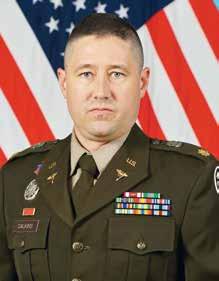
In a Sept. 23 UW Ag
article written by UW Extension Editor Brooke Ortel,
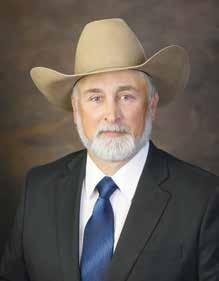
associate director and UW Extension rangeland management specialist, explains
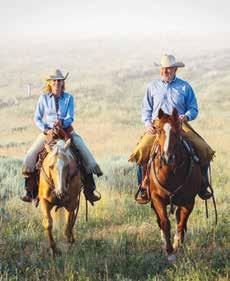

The University of Wyoming (UW) College of Agriculture, Life Sciences and Natural Resources (CALSNR) recognized outstanding alumni, valued partners and generous supporters during the annual Dean’s Legacy Din-
Crane appointed CALSNR dean
University of Wyoming (UW) College of Agriculture, Life Sciences and Natural Resources (CASLNR) Interim Dean Kelly Crane has been named dean of the college.
The appointment of Crane, who has led the college since December 2023, was approved by the UW Board of Trustees on Oct. 16.
“Crane stepped up to provide crucial leadership for this foundational academic college at a key moment in its history,”

UW President Ed Seidel says. “He has performed admirably in this role, connecting with key constituencies, earning the respect and trust of his faculty and staff and moving forward new programs and initiatives. We’re delighted to remove the ‘interim’ label from his deanship.”
“I am humbled by the support of my UW colleagues and our college’s stakeholders throughout Wyoming. CASLNR is composed of exceptional faculty and staff with an unquestionable commitment to serving students and expanding knowledge to help Wyoming address our most critical issues,” Crane says.
“It is an absolute privilege to serve as the dean of a college which is uniquely poised to exemplify the mission of a land-grant university through our responsiveness, relevance and accountability to Wyoming,” he adds.
ner, held on Oct. 11 during the university’s Agriculture Appreciation Weekend.
“I am incredibly proud our college is supported by so
Kemmerer Bareback Rider Donny Proffit continues to ride for the brand as he carries on the family tradition of being a legendary cowboy.
Proffit’s great-grandfather Hight began ranching in the mid-1940s, and later his grandfather Don took over the ranching business.
“My grandfather and my dad Clint Proffit grew up ranching and rodeoing to some extent,” Proffit stated.
Following in their footsteps, Proffit grew up ranching in Kemmerer, but he also knew he was destined to rodeo and started competing at an early age, gravitating to bareback horses like his father.
“When I started riding bareback, I
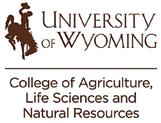
UW CALSNR has helped Wyomingʼs farmers and ranchers since 1891
The Morrill Act was passed in 1862, establishing a partnership between the federal government and states, creating a public higher education system in the U.S.
The act intended to provide practical education for a broad population and addressed the growing demand for agricultural and technical education.
Later in 1887, the Hatch Act was passed to support agricultural research programs at State Agricultural Experiment Stations in each of the 50 states, the District of Columbia and the Insular Areas.
Under the terms of these two acts, University of Wyoming (UW) welcomed students in 1887.
An essential part of UW’s mission was to highlight agricultural research, and in 1891 the College of Agriculture was established on the Laramie campus, along with the Wyoming Agricultural Experiment Stations and the Laramie Research and Extension Center.
The first experiment farms, listed in the university
seemed to be naturally better at it then saddle bronc riding or bull riding,” Proffit shared.
From there, his rodeo journey began, traveling from one event to the next across the country, keeping the prize in sight.
Growing up
“Growing up we were encouraged to compete,” Proffit shared. “I played football, wrestled and began my rodeo career early on, but wrestling and rodeo were always the sports I took to naturally and wanted to excel at most.”
Proffit’s father and grandfather not only ranched and rodeoed, they too were
A Gold Mine on the Wyoming Plains

The University of Wyoming (UW) is a treasure for the state of Wyoming in many ways. It gives so much back to the state, its people and others around the world.
“Rooted in the traditions of the West and surrounded by the rugged Rocky Mountains, UW was founded in 1886 and is a nationally recognized land-grant research institution with expert faculty, top-ranked academics and world-class facilities,” reads UW’s website.
UW houses seven colleges on its campus, offering students a wide range of education. Since I’m involved in agriculture, I’m most familiar with the College of Agriculture, Life Sciences and Natural Resources (CALSNR).
I think CALSNR is more in tune with the mission of being a land-grant program than any other college at UW, except maybe engineering.
It is the college with the most scholarships available for students.
CALSNR has nine departments – agriculture and applied cconomics, animal science, botany, ecosystem science and management, family consumer sciences, molecular biology, plant sciences, veterinary sciences and zoology and physiology.
Under these departments are programs like agricultural communications, microbiology, the Ranch Management and Agricultural Leadership program and the Ranching in the West Seminar Series.
Another large program under CALSNR are UW’s Agricultural Experiment Stations, of which there are four scattered across the state, each conducting research and assisting in Extension activities.
The Laramie Research and Extension Center, established in 1891, houses beef, sheep and swine research units, as well as the Cliff and Martha Hansen Teaching Arena. The center also has a 5,500-acre ranch located northeast of Laramie focused on rangeland livestock production. Additionally, the center is one of the highest-altitude agriculture research centers in the U.S. at 7,220 feet above sea level.
The Sheridan Research and Extension Center has two locations close to Sheridan with dryland and irrigated lands research. They are also involved with forage management, horticulture and viticulture – grapes.
The Powell Research and Extension Center consists of irrigated cropland and focuses on agronomic weed control, irrigation, cropping systems, high tunnel production, variety performance testing, transgenic variety response to herbicide treatments and alternative crops.
The James C. Hageman Sustainable Agriculture Research and Extension Center has 1,522 acres of dryland crops; 349 acres of irrigated cropland; 1,800 acres of rangeland; 40 acres of dryland organic cropland; a feedlot and a livestock research laboratory. All of this in one location provides the college with a diverse livestock and cropland laboratory.
The last program is UW Extension. Made up of many people on campus and across the state in every county, UW Extension assists in all parts of community agriculture. Many of us associate Extension with the 4-H program, where students learn all kind of crafts, show animals and learn to work with others. Nationally, it is one of the best programs for youth.
As many of us know, the best part of the college is its people. From the Dean’s Office and the faculty, to those in working in Extension and across the state in research facilities, they are the best.
Please remember the college when UW Giving Day arrives.

GUEST OPINIONS
UW Bucks Negative Higher Education Perceptions
These days, much is said and written about people questioning the value of higher education. They point to the cost of earning college diplomas, the burden of college debt, the assertion universities indoctrinate students in a particular political ideology and the opportunities to enter the workforce without college degrees.
While I will certainly acknowledge college may not be for everyone, I can tell you the University of Wyoming (UW) – as it has in so many ways since its founding in 1886 – bucks the trends which have soured so many on higher education.
First, UW remains an incredible bargain – particularly for Wyoming residents, but also for students from outside of our borders.
Our in-state tuition and fees remain among the lowest in the nation for public, four-year institutions and nonresident tuition is also relatively low. Our focus is on making college accessible to everyone in Wyoming – whether in
By Ed Seidel
person or online – as well as attracting people from across the world to contribute to the Cowboy State.
Additionally, well over one-half of UW students graduate with no student loan debt. This is remarkable at a time when, nationwide, over 60 percent of new college graduates are burdened with student loan debt.
Regarding political indoctrination, there is simply no indication UW is like some elite institutions on the East and West Coasts. UW students are exposed to a wide variety of ideas and perspectives – which is an important part of the college experience – but they’re free to find their own positions on the divisive issues of our times.
Last year, the university reaffirmed its commitment to institutional neutrality and free expression and as a place where all sides of an issue can be explored and debated. We are gaining national recognition as a university where all perspectives are welcomed.
When it comes to career outcomes,
data continues to clearly show a fouryear degree offers higher results in lifetime earnings than without a bachelor’s degree.
Even in proudly blue-collar Wyoming, economic forecasts point out future jobs will increasingly require higher education – whether bachelor’s degrees or certificates, programs we are looking to increase.
New data shows a couple of additional components – digital literacy and internship experiences as students – are important for college graduates to maximize their earning potential and career outcomes.
We have made great strides on the former, including making a computing minor available to all UW students, and we are working to provide more opportunities for paid internships and hands-on learning experiences for our students.
But increased earning potential isn’t the only reason for someone to
UW to host event
Members of the public will find out more about the University of Wyoming’s (UW) presence in Washakie County and UW alumni will connect with their alma mater during a “UW in Your Community” gathering on Oct. 21 in Worland.
UW President Ed Seidel will be in attendance and will speak during a brief program, highlighting the university’s collaborative efforts with the state’s community colleges to prepare students for the modern economy and boost entrepreneurism and the state’s economy, among other topics.
UW Department of Botany Professor Ellen Currano will discuss her extensive research in the Worland area and Big Horn Basin, where she has collected fossil leaves and plants from over 50 million years ago.
Dan VanderPloeg, a UW Extension agriculture and natural resources educator based in Worland, will discuss the local office’s activities.
Devan Costa-Cargill, regional director of UW’s Wyoming Small Business Development Center Network, will discuss efforts to help small businesses in Washakie County. Also scheduled to speak are current UW students from Washakie County, including Worland High School Graduates Annalise Gade and Stuart Trombley and Ten Sleep High School Graduate Kinley Anderson.
Beef summit set
The University of Nebraska-Lincoln’s (UNL) Department of Animal Science will host the 2024 Krutsinger Beef Scholars Summit on Nov. 7 at the Eastern Nebraska Research, Extension and Education Center near Mead, Neb.
Organized by senior students in the Krutsinger Beef Industry Scholars minor program, the summit will feature expert speakers, panels and discussions addressing critical topics in the beef industry.
Program registration will begin at 9:15 a.m., followed by a market outlook presentation by Livestock Marketing and Information Center Director and Agricultural Economist Dr. Tyler Cozzens.
A producer panel will look at challenges and opportunities of the cattle cycle, then lunch will be provided at noon.
After lunch, UNL Extension Beef Cow/Calf Specialist Dr. Kacie McCarthy will discuss reproductive management and technology; UNL Professor Dr. Galen Erickson will present on feedlot pen surfaces and Feedlot Health Management Services Veterinarian Dr. Eric Belke will discuss the use of technology in the feedlot.
Registration is $40 for general attendees and $30 for students, which includes lunch. Pre-registration is encouraged, though walk-ins are welcome.
For more information, to view the full agenda or to register by Oct. 28, visit go.unl.edu/beefsummit
USDA recruits exporters
The U.S. Department of Agriculture’s (USDA) Foreign Agricultural Service (FAS) will host its first-ever trade mission to Bangkok, Thailand Feb. 3-6, 2025. Current and potential U.S. exporters interested in participating should apply for consideration by Oct. 29.
While in Bangkok, U.S. agribusiness representatives will take part in business-to-business meetings with potential importers from both Thailand and Burma and will learn about local and regional market conditions through site visits and in-depth market briefings by FAS staff and other regional trade experts.
The U.S. was the fifth-largest supplier of agricultural products to Thailand in 2023, with $1.2 billion in exports. The top U.S. exports were bulk commodities used for feed and food manufacturing, but strong opportunities exist for consumer-oriented products as well.
U.S. exporters have opportunities in many sectors in Thailand, including dairy products, food preparations, seafood, tree nuts, fresh fruits, chocolate and cocoa, beef, wine, distilled spirits, hops, beer and food ingredients.
In Burma, opportunities exist for food preparations, dairy products such as cheese and whey, processed potatoes, fresh fruits, chocolate and cocoa, condiments and sauces, packaged foods, non-alcoholic beverages, wine, distilled spirits and seafood products.
To learn more about the trade mission and/or to apply, visit fas.usda.gov/topics/trade-missions/thailand-february-2025
Disaster areas designated
Wyoming has received an updated U.S. Department of Agriculture (USDA) Secretarial Disaster Designation due to damages and losses caused by wildfire. The updated designation expands the number of Wyoming counties designated primary natural disaster areas from one to nine.
In an Oct. 15 follow-up letter, U.S. Secretary of Agriculture Tom Vilsack designated Albany, Goshen, Platte, Converse, Hot Springs, Sheridan, Crook, Johnson and Weston counties as primary natural disaster areas, as well as nine contiguous counties including Big Horn, Fremont, Niobrara, Campbell, Laramie, Park, Carbon, Natrona and Washakie.
The updated designations came after a review of loss assessment reports by the USDA.
Wildfires have now burned more than 810,000 acres in Wyoming in 2024, much of it private land.
Education program offered
University of Wyoming (UW) Extension will offer a private pesticide applicator education program in Torrington on Oct. 24. The event will be held at Platte Valley Bank from 8 a.m. to noon.
Private applicator licenses are required for anyone who applies or supervises the application of restricted use pesticides. The upcoming program will provide an overview of certification requirements, pertinent regulations, pesticide safety and handling, proper disposal practices and more.
To RSVP, contact Linda Farrier at 307-532-2436 or goshen.county@uwyo.edu by 4 p.m. on Oct. 22.
All participants are required to bring a governmentissued ID, such as a driver’s license, to the event. Upon completion of the program, applications for private applicator licenses are submitted to the Wyoming Department of Agriculture for approval and issuance of licenses.
Additional private pesticide applicator education programs will be held across the state in coming months.
Testing for private applicator licenses is available in all county Extension offices throughout the year. For more information, contact a local UW Extension office.
McDonald’s files lawsuit
McDonald’s alleges Cargill, JBS, Tyson Foods and other companies conspired to fix beef prices by limiting supplies starting in January 2015, according to in a new lawsuit filed in a federal court in New York.
The McDonald’s complaint said the companies implemented a conspiracy by “coordinating, manipulating or agreeing to pay less than competitive prices” for the main or primary input in producing beef, namely, slaughter-ready cattle.
The lawsuit alleges it was done for the purpose of “fixing, increasing, stabilizing or maintaining above competitive levels” on their margins and the price of beef sold to McDonald’s.
The food companies already face similar lawsuits from U.S. consumers and cattle producers as part of an ongoing antitrust case playing out in Minnesota.
The lawsuit includes a graphic showing slaughter volumes of four of the companies “moving in tandem” starting in 2015 and continuing through 2019.
In addition, the lawsuit shows average annual slaughter volumes of independent packers rising to about 4.5 million head annually from 2015-19, compared to about 3.1 million head annually from 2007-14.
This occurred, the lawsuit said, all while the four companies named in the complaint saw those annual average slaughter volumes fall compared to the 200714 time frame.

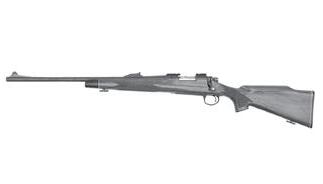

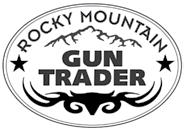


FEEDERS

EXTENSION EDUCATION
By Dan VanderPloeg, UW Extension Educator
Garson Ranch 80 Blk Strs & Hfrs, 750#, PTO @ ranch, Complete Vac. Program, No Implants, Coming off grass, High Elevation, Producer All Natural
V Cross LLC/Dee Norell 70 Mx Strs & Hfrs, 700-825#, Heifers are Spayed, Complete Vac. Program, Coming off grass
Justin Kremers 63 Blk/Bwf few Rd Strs, 800#, Complete Vac. Program, Coming off grass, Producer All Natural
Johnson Ranch Co. 25 Red/Rwf few Blk Strs, 700-800#, Complete Vac. Program, Coming off grass, Free Chjoice Salt & Mineral, High Elevation
Len & Robin Carter 21 Blk Hfrs, 800-875#, PTO @ ranch on Oct. 9, Complete Vac. Program, Coming off grass
Shannon Oneyear 16 Blk Hfrs, 800-875#, PTO @ ranch on Oct. 9, Complete Vac. Program, Coming off grass
Dave & Dottie Rasnake 18 Blk Strs & Hfrs, 600-675#, 2 Rounds of Shots: 7-way, Cattle Master Gold, Coming off grass
MJ Ranch 9 Blk Hfrs, 800-875#, PTO @ ranch on Oct. 9, Complete Vac. Program, Coming off grass
WEANED CALVES
John & Sherri Herbst 54 Blk Strs & Hfrs, 550-650#, Weaned a long time, Alfalfa Hay Fed, Branding & Precond. Shots
Amanda Weber 7 Blk/Bwf Strs & Hfrs, 500-650#, Weaned 45 days, On Grain Mix & Grass Hay, Branding & Weaning Shots: PRE-COND. CALVES
Peterson Livestock LLC 241 Blk Angus Strs & Hfrs, 400-500#, Branding & Precond Shots, Producer All Natural
Mike & Tina Christinck 180 Blk/Bwf Strs & Hfrs, 475-575#, Branding & Precond Shots, No Replacements Kept, High Elevation
Magoon Ranch 155 Blk Strs & Hfrs, 450-550#, Branding & Precond Shots
Berry Family Trust/Chuck and Kayle Berry 115 Blk/Bwf Strs, 450-550#, Branding & Precond Shots
Eric Hansen 95 Blk/Bwf/Char-x Strs & Hfrs, 500-600#, Branding & Precond Shots
Rona k Bruegger Rev. Trust 58 Blk Strs & Hfrs, 500-550#, Branding & Precond Shots CALVES
Jim Brach 420 Mostly Blk Strs & Hfrs, 450#, Branding Shots, High Elevation
S & T 200 Mostly Blk Strs & Hfrs, 450#, Branding Shots, High Elevation, Sired by Deer Creek Angus & Skavdahl Hereford Bulls
Lone I Ranch 140 Red Angus Strs & Hfrs, 400-500#, Branding Shots, Producer All Natural, Home Raised
Helen Nicolls 55 Blk Angus Strs & Hfrs, 350-500#, Branding Shots
Michael Steben 10 Blk/Rd Strs & Hfrs, 450-500#, Bunk Broke
LONGHORN SECTION
SECTION
McIntosh Ranch/Ellen Fox 117 Longhorn Strs & Hfrs, 175-385, Branding Shots: Vision 7 w/Spur, Producer All Natural, Home Raised
MONDAY, OCTOBER 28, 2024 - BRED COW SPECIAL
COMPLETE DISPERSAL
H5 Cattle Co./Todd & Michelle Scholtz 105 Choice to Fancy Blk Cows, 1300#, Complete Dispersal, 3 yr olds to ST, Bred to KG Angus Bulls, CF: March 1, Shots: Bovi-Shield Gold, Ivomectin
Double D Cattle Co. 80 Blk/Rd Angus Cows, Complete Dispersal, 4 yr olds to ST, Bred to M Diamond Blk Bulls, CF: Mx
Julie Whitlock 31 Blk Angus Cows, 1300#, Complete Dispersal, Mx Ages, Bred to Registered Blk Angus Bulls, CF: Mid-March, Shots: Staybred VL5, High Desert, All Raised a Calf, Gentle ****12 Blk Angus Hfrs, 900#, Complete Dispersal, Bred to Low Birth Weight Blk Angus Bulls, CF: Mid-March, Shots: Staybred VL5, Somuibac, Endovac w/Immune, Wormed w/Dectomx, High Desert, Gentle
BRED COWS
The Joe Patterson Family Ranch 140 Red Angus Cows, 3 yr olds, Bred to Schuler Red Angus Bulls, CF: April 1 Dry Fork Land & Livesock/Dee Johnson 35 Mx Cows, 3 yr olds to SM, Bred to Blk Bulls, CF: March/April
Dustin Beck 7 Blk Angus Cows, 1050-1100#, 2’s coming 3 yr olds, Bred to Blk Angus Bull, CF: April 1 for 45 days Calvin Nolke 4 BlkCows, 5-6 yr olds, Bred to Blk Angus Bulls, CF: Late March/Early April Danny Hockensmith 4 F 1 Black Angus/Wagyu Cows, 1200#, 3-4 yr olds, Bred to Pharo Cattle Company Red Angus Bulls, CF: May 15
BRED HEIFERS
Dustin Beck 7 Blk Angus Hfrs, 950-1000#, AI’d Bred to North Star 20474705 (Genex), CF: April 1 for 45 days ****8 Blk Angus Hfrs, 950-1000#, Bred to Blk Angus Bulls, CF: April 1 for 45 days
SALE RESULTS -CALF SPECIAL
MONDAY, OCTOBER 14 - 3903 HD
Casey Ruppert 8 Black Str Cf 399 398.00 $1,588.02
Roy Jarrard 19 Black Str
88 Ranch Land 75 Black Str Cf 535 308.00 $1,647.80
Josh Fitzsimmons 19 Black Str Cf 567 305.00 $1,729.35
Hiser Ranch LLC 24 Black Str Cf 592 289.00 $1,710.88 Robert Yeik 31 Black Str Cf 603 279.00 $1,682.37
Josh Fitzsimmons 23 Black Str Cf 674 275.00 $1,853.50
Hardin Stull 22 BWF Str Cf 528 297.00 $1,568.16
Dale Martin 60 BWF Str Cf 617 289.50 $1,786.22
Russell Wedemeyer 35 Hereford Str Cf 563 294.00 $1,655.22
Jim Bowen 27 Red/RWF Str Cf 587 285.00 $1,672.95
Jim Bowen 8 Red/RWF Str Cf 665 277.00 $1,842.05
Dylan Martin 24 Red/RWF Str Cf 638 272.00 $1,735.36
Joe Bright 33 Black Hfr Cf 347 377.00 $1,308.19
Allen Slagle 47 Black Hfr Cf 390 362.00 $1,411.80

Nolan Brott - Lusk, WY 307-216-0033 ***Ben Kukowski - Kaycee, WY 307-217-1472*** Scott Redden - Burns, Co 970-596-3588 WEDNESDAY,
Chris Williams - Greybull, WY


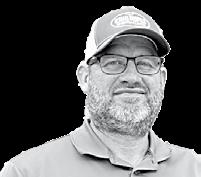
Fall is a Good Time to Push Back Against Perennial Weed Problems
Fall is here. Summer is spent running from one crisis to another, sweating under the relentless sunshine. Now, the roads are filled with beet trucks, and the sun has gotten lazy –coming out after the kids are at school and retiring before football practice has ended.
This is the best time of year to push back against perennial weed issues.
Canada thistle
A major perennial problem for all of Wyoming is Canada thistle or Cirsium arvense
Canada thistle is a deeprooted perennial weed distributed throughout Wyoming. It flowers in late spring to early summer and puts on a relatively small seed head which generally has between 1,000 to 1,500 seeds.
The seeds have a feathery pappus to catch the wind and spread and serve as the plant’s long range dispersal system.
However, it is the vegetative buds in the soil that make the plant such a persistent problem.
Canada thistle puts most of its reproductive resources into its vegetative propagation. The root system establishes quickly and spreads out around the plant. A single plant can colonize an area around itself from three to six feet in diameter.
Tillage of this area will cut off parts of the plants root system and drag it along. These cut-off root sections can be as small as one-quarter inch long and still have enough energy to produce a shoot and turn into a new plant.
Over time, these single plants will turn into colonies of plants and expand, outcompeting with both crops in farmland and grass in good pasture areas.
Keeping a productive field with a lot of competition is always the best way to push back against weeds.
While Canada thistle is a real issue once it gets going, the seeds it makes are much smaller and slower than other types of weed seeds, and a well-planted or estab-

lished field will shade out a new seedling.
This leaves field edges or other disturbed areas around a farm as the most likely place for new weeds to establish.
It is always best to make note of any thistle plants or patches one comes across this summer.
Fall control
It is this time of year the plant is starting to pull nutrients back from the aboveground portion which will soon be frozen and store it below ground in the root system.
Canada thistle patches which have had a light frost – while the plants leaves are still green and healthy – are primed for control.
A nice dosage of glyphosate, clopyralid or dicamba will be more effective for long-term control now than at any other time of year.
When choosing a herbicide, always keep in mind the surrounding area, future land use and, especially, the label directions. There is not one hammer for every nail. Unfortunately, it’s not normally a one-and-done process.
After hitting the patches this fall, individuals should follow up with additional treatments in the spring. Wait for spring plants to grow to a rosette with adequate leaf surface and treat again.
Producers who grow hay should consider attending WESTI Ag Days on Feb. 12 in Worland. This conference will be an excellent opportunity to obtain more information about hay growing in Wyoming. Topics will include weevil control, cut timing, weed control and more.
For more information, contact a local weed and pest district or reach out if you would like to chat. I would be happy to hear from you.
Dan VanderPloeg is the University of Wyoming Extension agricultural and natural resources educator serving Washakie County and Northwest Wyoming. He can be reached at dvanderp@uwyo.edu or 307347-3431.




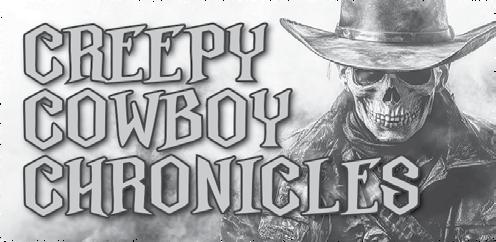
Paranormal
activity reported on UW campus
Over the years, several paranormal sightings have been reported on the University of Wyoming (UW) campus.
An October 2022 UW Branding Iron article reports paranormal activity at Knight Hall, including hearing unidentifiable sounds, smelling food when it was not present and seeing shadowy figures and moving objects.
On Oct. 31, 2012, a professional ghost hunting team came to investigate the activity in the hall, ordered by UW and the Wyoming Survey and Analysis Center.
According to the investigation’s official report, “It’s the professional opin-
ion of Haunted Xplorations, Knight Hall at UW does have paranormal activity and is haunted by one or more non-hostile, yet intelligent spirits.”
Knight Hall history
Knight Hall is a beautifully constructed three-story rectangular red stone building with long, rectangular windows trimmed in orange.
Construction of the hall began in 1940 and was completed in 1941 by the Works Progress Administration.
Knight Hall served as a women’s dormitory and was named in honor of Emma Knight, who became the advisor of women in 1911 and later became UW’s first
OBITUARIES
Patricia (Pat) Katherine Ellis
Aug. 12, 1949 – Oct. 1, 2024
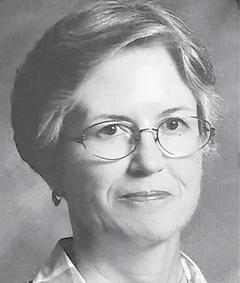
to Homer and Wilda Sutt Murphy in Lander, Pat grew up north of Lander and attended elementary school in Mill Creek.
She had fond memories of doing all sorts of outdoor activities, especially baseball, with her siblings John and Christy and the neighborhood kids. She transferred to the Lander school system in the fifth grade and graduated from Lander Valley High School. After high school, Pat attended beauty
full-time dean of women in 1918, according to the Alliance for Historic Wyoming website.
Famed Architect Wilber Hitchcock designed the hall with a Collegiate Gothic style in mind in 1924 but passed away in 1930 and was unable to supervise the construction process.
“Over the course of the structure’s 31-year history as a dormitory, it originally housed over 1,200 women in 70 rooms, and by 1946 it expanded to a total of 120 rooms,” reads the website. “During World War II, Knight Hall played an integral role by housing additional residents from Hoyt Hall while the U.S. Army increased the number of soldiers in the Laramie area for training purposes.”
Knight Hall ended its journey as a dormitory in 1972.
Today, it is home to Wyoming Public Radio and houses the UW administration and student services offices.
The legend of Knight Hall continues During the original con-
school, where she became a skilled hairdresser, working in the field for a few years.
In 1974, Pat married Duane Jamerman. They had one son together, Jared. They later divorced.
Pat found her true love with Richard (Dick) Ellis and his children Rick and Jodi. They married in 1979 and together embraced a life of ranching, sharing their passion for the land for the next 45 years.
Pat worked for the Lander school system for many years before eventually working for the Bureau of Land Management and the U.S. Forest Service. She loved it when her duties took her into the
struction of Knight Hall, workers discovered multiple unmarked graves, and construction was delayed as the unknown bodies were unearthed and transported to what is now the Greenhill Cemetery in Laramie.
Another UW Branding Iron article published in November 2019 notes the book titled “A History of the University of Wyoming (1887-1964)” by Wilson Ober Clough explains the bodies were most likely part of an early-day cemetery from the 1870-80s.
This appeared to hold true, as in the summer of 2004, work crews discovered another body while laying a pipeline, nearly 60 years after the first bodies were found.
The paranormal activity at Knight Hall may be caused by its unusual history, being it is allegedly built on the site of a twice exhumed cemetery.
In her book “Sinners and Saints: Tales of Old Laramie City,” the late Gladys Beery explored the history of Laramie’s original cemetery.
According to Beery, the city’s cemetery was placed east of the main strip, in a
Wyoming wilderness.
In addition to these jobs, she worked alongside Dick raising Angus cattle on the Ellis Ranch in Sinks Canyon. They also ran the Ellis Land and Livestock herd at North Fork after Dick’s father retired from ranching in 1987.
Pat was a terrific gardener, and she always made the most of Wyoming’s short growing season.
Her other hobbies included bead work in her early adult years, listening to music, reading and riding her very tall mule named Festus. She almost always had a cat, and she loved having her Sheltie dogs.
She was a longtime
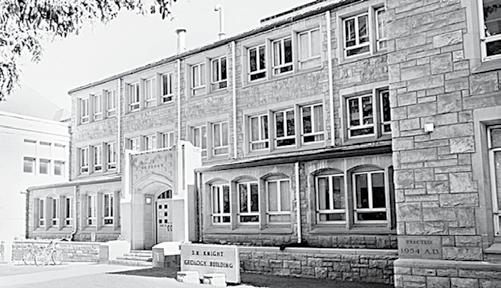
direction the city was not expected to develop.
However, the Union Pacific Railway Company decided to sell the cemetery land in order to make room for more residential lots and petitioned the city to relocate the cemetery, Beery writes.
In May 1873, inmates under the direction of Sheriff Tom Dayton began moving the cemetery to a location roughly where Knight Hall is today.
Knight Hall activity
There have been regular reports of unusual sightings throughout the years, but most activity is said to occur in the evening.
member of the Covenant Presbyterian Church and enjoyed attending Women’s Bible Study and Sunday services. She enjoyed going to lunch with her group of friends or rather the “lunch ladies” as she referred to them.
Pat will be remembered for her hard-working attitude, determination and the love she had for her family and friends. She will also be remembered for how well she took care of Dick in his final years. She was a true caregiver to him.
Pat was preceded in death by her beloved husband Dick, who passed away in June of 2024; her parents Homer and Wilda Murphy; her siblings John
On the first floor in the west wing, it’s common to see a young girl sitting on the floor before she fades away, while the second floor is infamous for its strange noises and voices being heard. There have also been reports of faces being seen in the second-story windows, but the spookiest place in the building is said to be in the basement, as some have heard beating drums and experienced the feeling of being watched.
Melissa Anderson is the editor of the Wyoming Livestock Roundup. Send comments on this article to roundup@wylr.net.
Murphy and Christy Diegel and nephew Ben Ellis.
Pat is survived by her son Jared (Laurie) Jamerman; her stepchildren Rick (Christy) Ellis and Jodi (Travis) Church; brotherin-law Bob (Suzy) Ellis; grandchildren Zach Joens, Sam Jamerman, Anna and Richard Ellis and Coulter, Chloe and Caden Church.
A celebration of Pat’s life was held on Oct. 11 at the Covenant Presbyterian Church.
In lieu of flowers, consider donating directly to the Covenant Presbyterian Church at 875 Fremont Street, Lander, WY 82520 or Lander Pet Connection at PO Box 854, Lander, WY 82520.
attend UW. Degrees from UW provide a platform for our graduates to fulfill their personal ambitions and to make the world a better place.
Whether it’s starting a company, advocating for the local community, advancing innovation or helping people
overseas, UW graduates are making a difference in Wyoming and across the world.
It’s no wonder – even as a recent Gallup poll found reduced confidence in higher education nationwide – there is robust evidence people with college degrees are, on average,
happier, healthier and more prosperous than those with less education.
So, as you read and listen to accounts that are critical of U.S. higher education, please keep in mind UW is an exception to almost all of the rhetoric.
We are working to pre-

pare our students for jobs in Wyoming’s current and future economies, to support our legacy industries and develop new ones and to address environmental, social and other challenges in our “small town with long streets.”
Most of all, we are working to prepare our graduates for successful careers and fulfilling lives, whether they decide to stay in Wyoming or put down roots elsewhere. This has been a constant throughout UW’s history, and it remains our priority today.
Ed Seidel is the 28th president of UW. This opinion column was originally published in UWYO Magazine on Sept. 16.
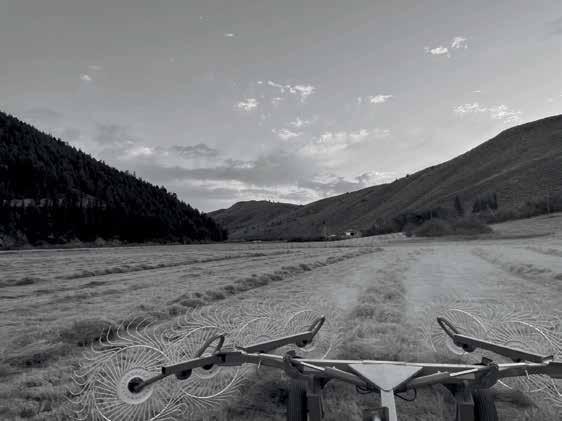

The mission of the Wyoming Farm Bureau Federation is to represent the voices of Wyoming farmers and ranchers

During the first two weeks of October, UW Extension has welcomed three individuals to the team – Matthew Helie as associate director and Erica Reasoner and Larissa Bonnet as county educators.
Helie hired as associate director
As one of two associate directors, Helie will oversee 4-H educators statewide and guide the team at the Wyoming State 4-H Office. In this role, he will also provide leadership for the 4-H Youth Development Program.
“Through the interview process, it became clear Helie invests in people and has valued relationships through his career,” says UW Extension Director Mandy Marney. “His administrative experience, combined with experience building relationships with stakeholders
University of Wyoming Extension welcomes new personnel

in a variety of settings, will be helpful in his new role as associate director.”
Helie received a bachelor’s degree in dietetics from the University of Connecticut in 2015. In 2017, he achieved his master’s degree in public health from Johns Hopkins Bloomberg School

BULLS
L U Ranch - Worland
1 XBred Bull, 1835# $15750
Wiechmann, Jason - Ten Sleep
1 Blk Bull, 1920# $14200
Haun, Bill - Worland
1 Blk Bull, 2055# $14000
Diamond S Ranch LLC - Hyattville
1 Blk Bull, 2085# $14000 Darling, Chanse - Hyattville
1 Blk Bull, 1825# $14000
Durbin Creek Ranch - Thermopolis
1 Hrfd Bull, 1650# $13450
1 Hrfd Bull, 1780# $13100
TD & Sons LLC - Worland
1 Blk Bull, 1950# $13250 Barnard, Joel - Lovell
1 Red Bull, 1970# $13000 Johnson, Hans - Powell 1 SimX Bull, 1485# $12750 BRED COWS Warneke, Terry - Worland
42 Blk Bred Cows $1825/Hd. COWS Rice Ranch Inc. - Ten Sleep
3 Red Cows, avg. 1143# $13800
2 Red Cows, avg. 1375# $11800 Ready, Michael - Thermopolis
1 Blk Cow, 1640# $13500
1 Blk Cow, 1445# $12500 Wiechmann, Douglas - Ten Sleep
1 Blk Cow, 1400# $12950
2 Blk Cows, avg. 1403# $12900
1 Blk Cow, 1305# $12200 Miller, William - Crowheart
1 BWF Cow, 1460# $12700
L U Ranch - Worland
2 Blk Cows, avg. 1405# $12600
2 Blk Cows, avg. 1240# $12300
Lazy B V Cattle - Meeteetse
2 Blk Cows, avg. 1210# $12500
Haun, Bill - Worland
1 RWF Cow, 1655# $12400 Big Horn Basin Livestock - Worland
1 Blk Cow, 1150# $12400 Crowfoot Ranch Inc. - Worland
3 Blk Cows, avg. 1138# $12400
Wiechmann, Jason - Ten Sleep 2 BWF Cows, avg. 1260# $12350 Wheatcroft, Alexander - Worland
2 Blk Cows, avg. 1358# $12300 Calvo, Joe - Burlington
1 Red Cow, 1505# $12300 Rio Bravo Cattle Co. - Colo. Springs
2 XBred Cows, avg. 1280# $12100
1 XBred Cow, 1155# $11850
1 XBred Cow, 1235# $11750 Diamond S Ranch LLC - Hyattville
2 Hrfd Cows, avg. 1665# $12000 Reuter, Joshua - Burlington
1 Blk Cow, 1330# $12000 Brewster Ranch LLC - Ten Sleep
2 BWF Cows, avg. 1113# $11900 Hildebrand, Sheila - Red Lodge
2 Blk Cows, avg. 1368# $11700 Hoyt, Mark - Basin
3 Blk Cows, avg. 1243# $11100 Lofink, Brad - Thermopolis
1 Red Cow, 1320# $11000 Gillett Farms, Inc. - Powell
2 Blk Cows, avg. 1485# $11000 HEIFERETTES
L U Ranch - Worland
1 Blk Hfrette, 855# $19000
1 Blk Hfrette, 975# $18000 Wiechmann, Jason - Ten Sleep
1 Blk Hfrette, 1000# $18900 Lazy B V Cattle - Meeteetse
1 Red Hfrette, 925# $17000
1 Blk Hfrette, 1155# $16100 Rice Ranch, Inc. - Ten Sleep 1 Red Hfrette, 1080# $16600
of Public Health.
He earned his doctorate in nutrition from Louisiana State University in 2022. His research required working with people from a variety of cultural backgrounds, including rural communities.
Helie most recently served as director of Supplemental Nutrition Assistance Program-Education (SNAPEd) programming and evaluation at Louisiana State University (LSU).
In this role, Helie managed more than 30 staff members, oversaw reporting and budgeting and analyzed data to ensure the program was benefiting Louisiana residents.
During his time at LSU, he also collaborated with 4-H Healthy Living programs throughout the state, providing support to SNAP-Ed educators and
Worland, WY
Brewster Ranch LLC - Ten Sleep
1 Blk Hfrette, 1050# $14500
Diamond S Ranch LLC - Hyattville
1 Hrfd Hfrette, 1070# $14000
Calvo, Joe - Burlington
2 Rd/Blk Hfrettes, avg. 1063# $13900
• Upcoming Sales • Oct. 21 – Monday • The Bawl of the Fall Feeder Special Oct. 24 – All Class Cattle Oct. 31 – All Class Cattle Nov. 4 – Monday • The Bawl of the Fall Feeder Special Nov. 7 – Bred Cow Special w/ All Class Cattle Nov. 14 – All Class Cattle Nov. 18 – Monday • The Bawl of the Fall Feeder Special Nov. 21 – All Class Cattle, Sheep & Goat Nov. 28 – No Sale
Dec. 2 – Monday • Weaned Calf Feeder Special
Dec. 5 – All Class Cattle
Dec. 12 – All Class Cattle Dec. 19 – Bred Cow Special w/ All Class Cattle, Sheep & Goat
Consignments • Oct. 21 • Bawl of the Fall Feeder Special
Larry & Alex Paxton – 250 mixed mostly black, 500-550#, shots at branding.
Bjornestad Land & Cattle – 100 black steers, 100 black heifers, 475-550#, shots at branding. Larson Ranch – 95 black steers, 65 black heifers, bangs vaccinated, two rounds of shots.
Leroy & Clay Shumway – 150 mixed black, 400-600#, two rounds of shots.
Aaron Carollo – 160 mixed Angus/SimAngus X, 400-500#, two rounds of shots.
Tom & Catherine Johnston – 100 mixed red, mostly steers, 450-500#, two rounds of shots, poured, high elevation.
Blaine Thoman – 100 mixed black, two rounds of shots.
Bud & Kathy Arnold – 100 mixed black, 500-550#, no brands.
Karen Buck – 90 mixed black, red CharX, 350-450#, complete vacc at branding.
Mark & Dustin Dooley – 70 mixed black, 450-500#, two rounds of shots.
Kirby Creek – 70 mixed black, few red, 400-500#, two rounds of shots.
Chase Darling – 50 mixed black, 500#, two rounds of shots, knife cut, high elevation.
Kyle & Guy Tharp – 50 mixed black, 550-600#, shots at branding.
PAR Ranch – 50 black steers, 525#, shots at branding, weaned.
Hoggs Black Diamond – 20 black & red steers, 25 black & red heifers, 400-500#, two rounds of shots, weaned.
Jerry Devries – 50 mixed black, 400-500#, shots at branding, on free choice hay, weaned.
Wooden Shoe Farms – 20 black steers, 2 bull calves, 20 black heifers, 400-450#, shots at branding.
Jim & Alice Emerson – 20 black & BB steers, 500-600#, shots at branding.
Triple C Hay Farms – 22 black steers, 600-650#, shots at branding, hay fed.
Aaron Mosey – 10 black heifers, 9 black steers, 550-600#, shots at branding.
Mike Messenger – 10 mixed black, 550#, shots at branding, weaned.
Jim Wilcox – 50 mixed SimX, 300-500#, shots at branding.
Michael Bottoms – 10 black steers, 500#, two rounds of shots, Paint Rock bulls, weaned first of September.
Terri & Gary O’Donnell – 20 black/BWF steers, 575#, 15 black/BWF heifers, BWF, 525#, Paint
Rock & Largent bulls, longtime weaned.
Bobbi & Michael Byrd – 25 mixed red & black, 500#, two rounds of shots.
Torry Burson – 9 black steers, 4 black heifers, 450-600#, shots at branding, high elevation, weaned September.
Chancy & Karla Gitlitz – 6 black heifers, 5 black steers, 500-600#, two rounds of shots.
Gust Mastre – 10 black steers, 500#, complete vacc at branding.
Trisha Cachelin – 25 black steers, 500-550#, shots at branding.
Brewster Ranch LLC – 3 black yearling steers, 650-700#, 2 black PTO heifers, 650-700#, Virashield 6 VL +5, poured w/ cleanup Oct. 15. Oct. 24 • All Class Cattle
Ronnie Lucas – 1 load short-term black cows, calving March/April, bred to black bulls.
• Field Rep & Auctioneer • (307) 331-2222
4-H educators.
“I'm very excited to get out to visit county offices and get to know the state and all of the great people in 4-H and Extension,” says Helie. “I can’t wait to go visit with everyone in person to hear about their priorities for their counties and how we can support them at the state level.”
Reasoner continues work with UW Extension
Formerly the administrative assistant for Washakie County, Reasoner is switching roles within UW Extension as the new 4-H youth development educator for Crook County.
Reasoner began working as an administrative assistant in the Washakie County Extension Office in 2022. During her time in this position, she took on several volunteer leadership roles within Washakie County 4-H.
As a volunteer, Reasoner led 4-H activities in multiple project areas, including photography, shooting sports and fishing. She served as the Washakie County 4-H council treasurer and co-leader in the South Flat Juniors 4-H Club.
Reasoner also created a

Junior Master Gardener program for local youth in cooperation with the Worland Community Garden.
“I was not involved in 4-H in my youth, but after seeing the impact it has on the lives of youth, I wish I had been able to,” says Reasoner. “After jumping feet first into becoming a 4-H leader and working with youth, I fell in love with the community it creates.”
Reasoner believes her experiences in Washakie County will help her inspire youth, coordinate events and connect to new people. She is excited to explore Crook County and learn from new colleagues.
Reasoner earned her bachelor’s degree in general studies from UW in 2023. She has previously worked for the U.S. Fish and Wildlife Service as a biological science technician, where she assisted with invasive weed control.
Bonnet welcomed by Sheridan County
Additionally, UW Extension welcomed Bonnet as a community vitality and health educator serving Sheridan County.
Bonnet grew up in Sheridan and serves as a volunteer in various community organizations.
Currently, she referees youth sports, serves as the president of the Sheridan Junior Hawks hockey team and supports the Advocacy and Resource Center of Sheridan.
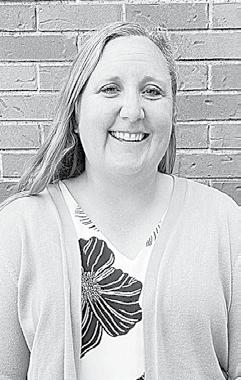
Bonnet earned a bachelor’s degree in liberal arts from Mesa State College in Grand Junction, Colo. in 2002. In 2005, she received her master’s degree in counseling and human services from the University of Colorado at Colorado Springs, Colo.
Bonnet is currently pursuing a doctorate in education from Grand Canyon University in Phoenix, Ariz., which she anticipates completing in 2025.
Bonnet has spent more than a decade working for Sheridan College. For 13 years, she served as director of campus life and housing. In the past year, she worked as the director of campus services.
In her time at Sheridan College, Bonnet developed leadership trainings, addressed student concerns, served on committees governing the college and coordinated building and service maintenance.
She looks forward to learning new skills, deepening her existing connections and meeting new people in her new role with UW Extension.
“I am excited to create new relationships and work with key partners in the Sheridan community to bring opportunities to the community,” says Bonnet.
Maya Gilmore is a writer and editor of UW Extension. She can be reached at mgilmor4@uwyo.edu.
Export numbers reported
August pork exports
totaled 238,989 metric tons (mt), up six percent from a year ago but the second lowest of 2024. Export value increased eight percent to $702.9 million.
In addition to the strong results in Mexico, exports trended higher to Central and South America, the Caribbean and the Association of Southeast Asian Nations (ASEAN). August shipments to Malaysia were recordlarge, while exports to Colombia achieved a value record.
For January through August, pork exports were just under two million mt, up four percent from a year ago, while value climbed seven percent to $5.68 billion.
Pork export value was on a record pace through
August, and U.S. Meat Export Federation projects both export volume and value will reach record highs in 2024.
Beef exports totaled 102,682 mt in August, down six percent from a year ago and the lowest since January. Export value fell four percent to $845.9 million.
Mexico’s demand for U.S. beef remained robust in August, while exports also trended higher to Taiwan, the Middle East and the ASEAN region. But these results were offset by lower shipments to Japan, South Korea, China and Hong Kong.
Through the first eight months of the year, beef exports were three percent below last year at 856,834 mt, but were four percent higher in value at just
under $7 billion.
Exports of U.S. lamb reached 288 mt in August, up 170 percent from last year’s low volume. Export value was $1.16 million, up 70 percent. These results drove January through August exports 20 percent above last year’s pace in volume – 1,946 mt and 23 percent higher in value at $10.2 million.
While larger shipments to the Caribbean and Mexico accounted for most of this growth, exports also trended higher year-overyear to the Philippines, Canada, Guatemala and Taiwan.
A detailed summary of the January through August export results for U.S. beef, pork and lamb, including market-specific highlights, is available at usmef.org




wrestlers in their time.
“I would listen to stories about experiences my dad had with wrestling, rodeo and working as a cowboy for numerous outfits as I grew up,” Proffit continued. “It inspired me, and he taught me a lot in both sports.”
In high school, Proffit won four state wrestling titles and one state bareback riding title, along with one state all-around title.
After graduating from Kemmerer High School, Proffit attended the University of Wyoming (UW) in Laramie on a rodeo and wrestling scholarship.
“After about a semester, I decided to focus on rodeo alone, and I qualified to four College National Finals Rodeos but could only go to three because of COVID-
19,” he said. “But I did make the short round two of those three years.”
Proffit noted college rodeo came with great coaches and practice horses to help his riding and advocates he wouldn’t be as good now if it wasn’t for college rodeo.
Proffit dominated the Central Rocky Mountain Region as a leading figure on the UW Rodeo Team, but he had his sights on professional rodeo and the Wrangler National Finals Rodeo (NFR).
The next chapter In December of 2023, Proffit graduated from UW with a bachelor’s degree in agricultural communications.
But it was during college when he began his professional career, competing mostly at circuit rodeos.
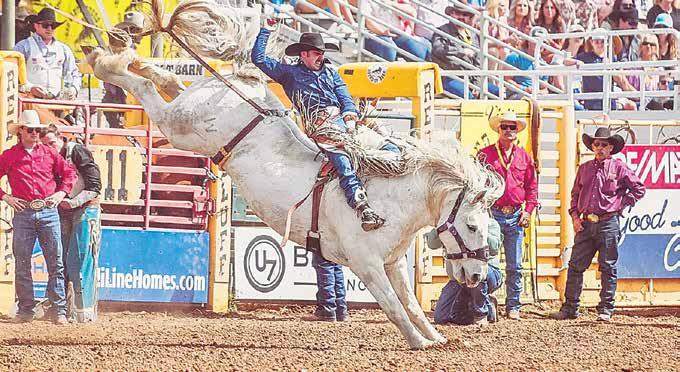
“In 2023, I bought my Professional Rodeo Cowboys Association (PRCA) rookie card and went hard
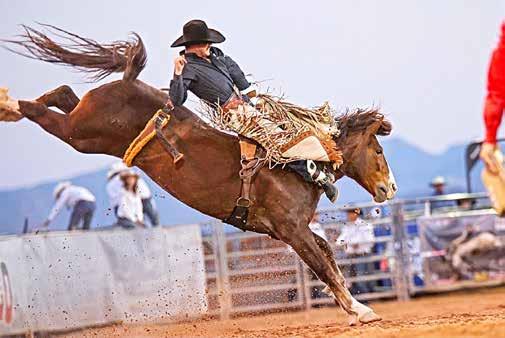
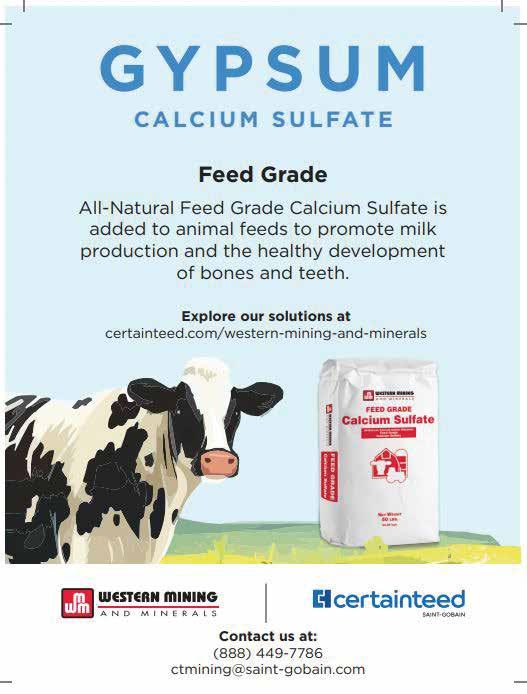


for the first time,” he said. “I ended the season 36th in the world.”
This year Proffit set his sights on making his first NFR but sustained a wrist injury which set him back in the heat of the summer run.
“I had to sit out of a lot of major rodeos that could have helped me a lot,” he shared. “My plan now is to finish the end of this season out strong and stay ready for next year.”
Proffit’s biggest career and most memorable win thus far happened in April at the Red Bluff Round-Up in Red Bluff, Calif., when he drew the iconic “Virgil” of C5 Rodeo Company and
spurred him for 90 points in front of a sold-out crowd.
He beat other riders like Kaycee Feild, Tanner Aus, Rocker Steiner and Garrett Shadbolt for the win.
Not only did this ride secure him a win, Proffit also set a new arena record.
During the 2024 season, he has traveled many long highways and a few dirt roads, as friends and family cheer him on and ended the season sitting 34th in the world standings.
This season, Proffit has secured some big wins pushing him up the leaderboard, as he placed third at the Pikes Peak or Bust Rodeo in Colorado Springs, Colo.
with an 84.5-point ride on Bill Flick Top E, and with an 87.5-point ride on OLS Tubs Stevie, he earned a memorable second-place finish at the Clark County Fair and Rodeo in Logandale, Nev. Proffit is a rising star and is on track to dominate the PRCA bareback riding competition but ranching is also important to him, and between rodeos he helps his parents back home on the ranch with dreams of taking it over when he is no longer on the rodeo circuit.
Melissa Anderson is the editor of the Wyoming Livestock Roundup. Send comments on this article to roundup@wylr.net.
Bieber Fever
Fall Female & Bull Sale
ThurSday, NovemBer 14, 2024
The raNch Near leola, Sd • oNliNe wiTh dvaucTioN
regiSTered Bred heiFerS due JaNuary - march
regiSTered Bred cowS due FeBruary - march
regiSTered Bred cowS due may - JuNe
commercial Bred heiFerS due iN march
age-advaNTaged BullS ouT oF JumpSTarT J137, FlaShdrive g266, paycheck 0728, aSSeT 1276, aNd compoNeNT 1112J
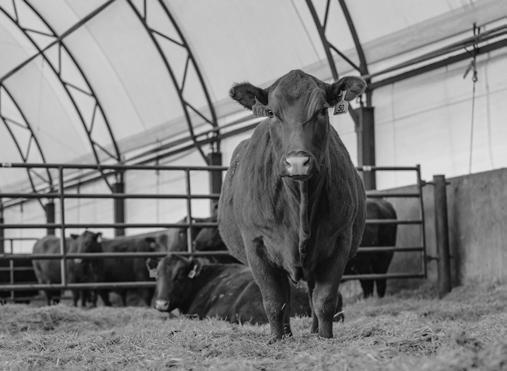

Annual UW potato harvest boosts food security across Wyoming
Nearly 12,000 pounds of potatoes were donated to Food Bank of Wyoming during the fourth annual potato harvest at the University of Wyoming’s (UW) James C. Hageman Sustainable Agriculture Research and Extension Center (SAREC) last month.
The potato harvest, made possible through a partnership between SAREC, Food Bank of Wyoming and UW Extension’s Cent$ible Nutrition Program (CNP), is part of ongoing efforts to address food security in Wyoming.
2024 potato harvest
“We had another successful year at the SAREC potato harvest,” said CNP Director Mindy Meuli. “We filled the Food Bank of Wyoming truck with potatoes for statewide distribution through local food pantries.”
The potatoes are grown at SAREC as part of outreach efforts which include educational opportunities for local elementary school students, as well as donations.
After the annual harvest, potatoes are transported by Food Bank of
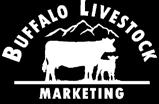
Wyoming to food pantries across Wyoming. They are available at no cost to hunger relief organizations partnering with Food Bank of Wyoming.
As of Oct. 16, nearly all of the potatoes have made their way out into the state through Food Bank of Wyoming’s express route, which delivers fresh produce to Wyoming communities.
Volunteers and partnerships
“I would just like to thank the volunteers who came to help. Without volunteers, these potatoes don’t get bagged,” said Brian Lee, a research scientist at SAREC who is instrumental in coordinating all aspects of the annual harvest.
This year’s volunteers included SAREC staff members, women from the Wyoming Women’s Center, CNP and UW Extension employees, undergraduate students in UW’s Family and Consumer Sciences Department, 4-H families, community members and Food Bank of Wyoming staff members.
“We’re beyond grateful for the initial collabor-
ative efforts between CNP and SAREC back in 2021 that brought the harvest into fruition. We’re even more thankful for the continued partnership so our team can distribute the potatoes to communities around Wyoming, keeping fresh and local produce accessible,” said Rebecca Travers, Food Bank of Wyoming program manager.
“A few of us on staff at the food bank were able to attend and help harvest potatoes, which was a great way to spend our morning,” she added.
Continued collaboration
Since 2021, more than 42,000 pounds of potatoes grown at SAREC have gone to hunger relief partners through this partnership.
“We have enjoyed hosting this project and wish to continue building on its success,” said Lee.
The donation of fresh, locally-grown produce not only provides more food to hunger relief organizations, but can also increase nutritious options available to patrons. The longer shelf life of potatoes compared to other produce items makes
Austin Snook • 307-290-2161
Taylor Snook • 307-290-2273
Craig Deveraux • 307-746-5690
Dan Catlin • 406-671-7715
Clint Snook • 307-290-4000 Cheyenne Seymour • 605-641-0638
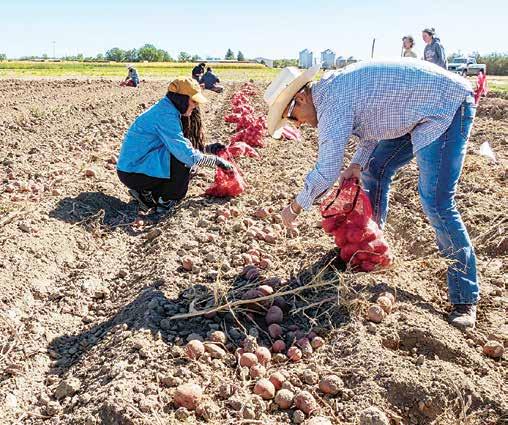
them a great option for this time of year.
In addition to helping with the harvest, CNP works with local food pantries to connect patrons to recipes and resources for
Kyle Kallhoff • 605-881-1526
Market Report • October 16, 2024 • Spring Calf/Yearling Sale
Thank you and we appreciate your business!
using and storing potatoes safely.
“We are excited to continue this partnership with SAREC and the Wyoming Food Bank to help feed Wyoming families fac-
ing food insecurity,” said Meuli. Brooke Ortel is a writer and editor for UW Extension. This article was originally published by UW Extension on Oct. 16.
Wildfire prevention urged
As unusually dry and warm weather persists across the West, so does fire season for Wyoming public lands. The Bureau of Land Management (BLM) Wyoming reminds outdoor enthusiasts to be cautious while hunting and recreating this fall.
The National Multi-Agency Coordination Group has raised the national preparedness level to five, which is the highest preparedness level. Firefighting resources are extremely scarce.
Preventable wildfires threaten lives, property and precious resources every year. Because of these volatile conditions, BLM asks individuals to do their part to prevent wildfires while recreating on public lands. With much of Wyoming remaining under fire restrictions, individuals are encouraged to visit blm. gov/programs/public-safety-and-fire/wyoming/fire for in-depth information about certain areas in the state. Be aware of local public safety area closures, take precautions before venturing out and be careful with anything that could start a fire.
LIEAP applications open
Concerned about paying winter heating bills? The Wyoming Low Income Energy Assistance Program (LIEAP) is now accepting online applications for the 2024-25 season. LIEAP is a federally-funded program which helps eligible, low-income Wyoming families, seniors and individuals pay a portion of their winter home heating costs.
This year, LIEAP is only accepting online applications, starting on Oct. 1 through March 31, 2025. The online application requirement means households will need to complete the application through the customer portal and not on a paper form. Apply at lieapwyo.org
For application assistance, call 800-246-4221, e-mail lieapinfo@wyo.gov or visit the Align Team in Cheyenne or the local Wyoming Department of Family Services (DFS) office for personalized help.
Once a household’s application is approved, the energy assistance benefit will be paid directly to the fuel supplier. Bills for unregulated fuels – propane, pellets, wood, heating oil and coal – are eligible for payment beginning Oct. 1. Bills for regulated heating sources – natural gas and electricity – are eligible for payment beginning Nov. 1. Benefits are available through May 31, 2025 or until the recipient’s benefit amount is exhausted, whichever happens first.
Eligibility hinges on household income not exceeding 60 percent of the state’s median income. Special priority is given to households with vulnerable members, including seniors, individuals with disabilities and with children under the age of five. Benefits are available to homeowners and renters, including if living in an RV or camper that is permanently parked.
LIEAP is funded through a federal block grant program by the U.S. Department of Health and Human Services and administered by DFS.
Wild horse overabundance harms sage grouse, UW researchers find
When wild horse populations are allowed to grow beyond numbers set by the Bureau of Land Management (BLM), sage grouse numbers suffer, according to newly published research led by University of Wyoming (UW) scientists.
After 15 years of study involving more than 1,000 sage grouse in central Wyoming, the researchers concluded managing free-roaming horses at or below the BLM’s maximum appropriate management levels (AML) within herd management areas (HMA) would be highly beneficial to sage grouse populations.
“Over the last 20 years, free-roaming horse numbers have increased to more than three times the targeted goal across BLM lands, and this increase is one of the causes of sage grouse population declines,” says UW Department of Ecosystem Science and Management Professor Jeff Beck, who led the research team.
“Our research found increasing free-roaming horse numbers are harmful for sage grouse by adversely affecting multiple vital life stages,” Beck adds. “This is particularly important when considering the burgeoning number of free-roaming horses on public lands where sage grouse occur and the heightened conservation status of sage grouse populations, which are declining range-wide.”
The research is detailed in a paper published in the Journal of Wildlife Management
Other members of the research team are current or former UW Scientists and Graduate Students Kurt Smith, Christopher Kirol, Caitlyn Wanner, Jacob Hennig and Derek Scasta.
Scientists from the U.S. Geological Survey, the U.S. Fish and Wildlife Service, Oregon State University and the George Miksch Sutton Avian Research Center in Bartlesville, Okla. were also involved.
Wild horse and sage grouse interaction
Free-roaming horses on BLM and U.S. Forest Service lands in the West are protected under the Wild and Free-Roaming Horses and Burros Act of 1971.
Management on BLM lands is based upon a maximum AML of 26,785 horses and burros combined. Local management occurs within
177 BLM HMAs, each of which has an established maximum AML.
However, as of March 2023, BLM lands were occupied by nearly 83,000 freeroaming horses and burros, whose annual growth rates can average 20 percent per year.
Over 80 percent of the BLM’s HMAs have populations exceeding their AMLs.
Grazing by free-roaming horses can reduce shrub density, vegetation cover and abundance of key forbs used by sage grouse, the researchers say.
Horse grazing also adversely impacts riparian areas and reduces plant understory and the heights of perennial grasses, while promoting invasive plants, such as cheatgrass, which also negatively influence sage grouse across different life stages.
About 12 percent of the West’s sage grouse habitat is managed for free-roaming horses within BLM HMAs. In Wyoming, sage grouse cooccur in about 99 percent of BLM HMAs, amounting to 11 percent of the state’s total sage grouse habitat.
The newly published research focused on sage grouse in Wyoming’s Atlantic Rim, Red Desert, Jeffrey City and Stewart Creek areas. The scientists captured and monitored 995 adult female grouse and monitored 1,075 nests, 372 broods and 136 juveniles.
The researchers also looked at the numbers of free-roaming horses in those areas. For comparison, grouse were captured and monitored in areas outside of BLM HMAs as well.
UW research findings
“There was strong or moderate evidence overabundant free-roaming horses negatively affected nest, early and late brood and juvenile grouse survival,” the researchers wrote, noting relative survival declines ranging from 8.1 percent to 18.3 percent.
Notably, survival rates for adult female sage grouse in areas where horses didn’t exceed AMLs were similar to survival rates in areas outside of HMAs, where exposure to free-roaming horses was assumed to be zero.
“Our research identified the conservation value of maintaining free-roaming horse numbers at low levels not exceeding maximum AMLs, which is a key factor in
CRANE continued from page 1
Crane served as senior associate dean of CASLNR before becoming acting dean in December and then interim dean in March.
In addition to being named senior associate dean in 2022, he assumed the role of director of the Ranch Management and Agricultural Leadership program, which launched this fall.
Crane served UW Extension as an area educator and range specialist from 1994 to 2002. He established and was the principal consultant for Frontier Natural Resource Consulting until
sage grouse conservation that appropriate rangeland management can rectify to reduce further declines of this imperiled species,” the scientists wrote.
“Our study helps validate the process of setting AMLs, which is based on a landscape’s capacity to support free-roaming equids after accounting for vegetation and soil characteristics, wildlife populations, environmental quality and other grazing animals, including cattle,” they add.
The researchers note they recognize the difficulty of managing free-roaming horses due to public sentiment and litigation against horse removal.
Beck and other researchers previously argued because contrasting societal views have created an approach which simultaneously manages horses without definition on the range as wildlife, livestock or pets, current federal government horse management programs face significant challenges in managing horses
at appropriate numbers to prevent adverse impacts to wildlife populations.
However, the newly published research – showing overabundance of one iconic species is harming another
Green Acres Corn Maze
potentially imperiled iconic species – helps inform action, the scientists say.
2008, when he accepted the position of assistant professor and range extension specialist at the University of Idaho, which he held from 2008-11.
He rejoined UW in 2011 as associate director for UW Extension. In 2019, he was appointed associate dean and director of UW Extension.
Crane holds a PhD in rangeland ecology and management and a Master of Science in range management, both from UW.
This article was originally published by UW News on Oct. 17.
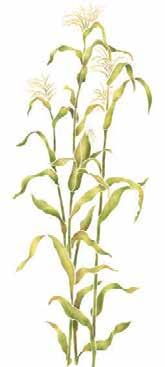

“Managing free-roaming horses at appropriate levels would be highly beneficial to sage grouse populations and other species which rely on functioning sagebrush ecosystems,” the researchers concluded.
This story was originally published by UW News on Oct. 14.
• AND MORE!
Celebrating 12 Years of Family Fun!
Sept. 14– Oct. 31, 2024 • Casper, WY
Saturdays and Sundays 10 a.m. - 6 p.m. weekdays by appointment
Turn right on 33 Mile Rd. and take for 3 miles. Turn right on County Rd. 121 and take for 2.5 miles and you're there! Follow the Pumpkins!
For more more information, visit GreenAcresCornMaze.net or call the MAZE Hotline at (307) 797-8796

Like us on Facebook!



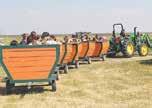
Proceeds from this year’s corn maze will benefit Natrona County local non-profits
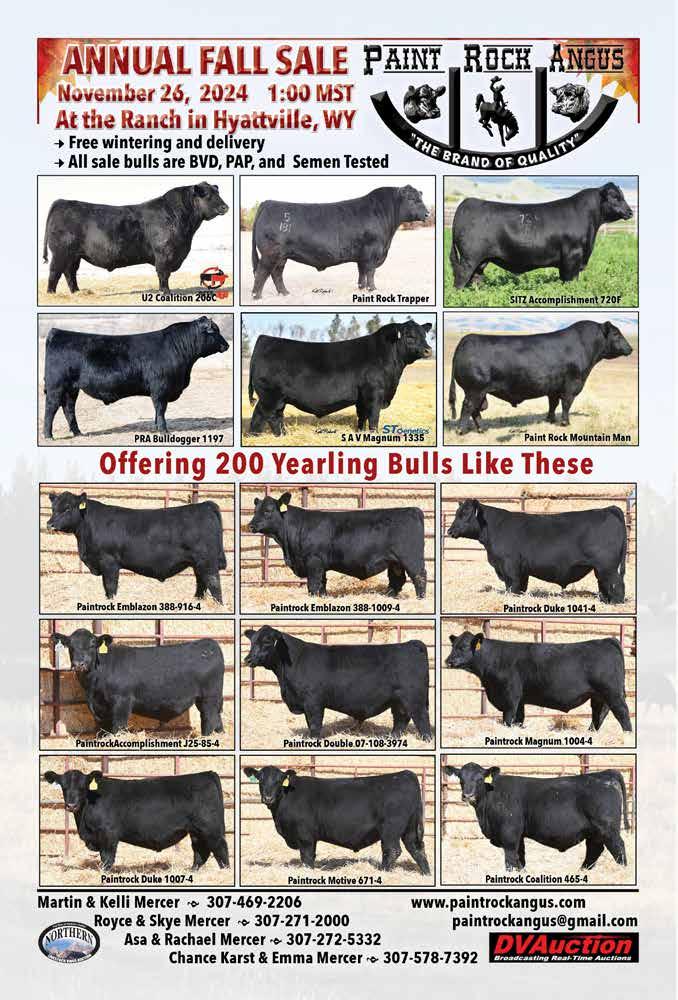
On Oct. 10, Gov. Mark Gordon hosted a virtual media conference to discuss Wyoming’s infrastructure and economy, provide a wildfire update and field questions from media members.
To begin the online news conference, Gordon thanked numerous media outlets for attending and gave a warm-hearted thank you to the hundreds of firefighters battling wildfires across the Cowboy State.
ARPA
Gordon opened the conference with the latest update on federal funding through the American Rescue Plan Act (ARPA).
“My office is making an effort to secure as much funding as possible,” he stated.
The federal government requires each state to commit to specific uses of ARPA funds by Dec. 31 and spend the funds by Dec. 31, 2026.
Gordon mentioned, “We’ve really tried to make sure those dollars have been deployed in lasting assets because, countrywide, there was so much demand for this.”
Gordon explained ARPA funds cannot be appropriated until contracts are finalized, but several Wyoming communities have struggled to find contractors to help get plans in place.
“So far, I believe we have done an exemplary job of creating long-lasting improvements for every citizen in Wyoming and every community,” he said.
However, some of the funding is already coming back after realizing projects, such as the Wheatland water tower, which wouldn’t be ready by the deadline.
“State officials will meet at the end of the month to discuss distributing funds to existing projects in place,” Gordon added.
Grant office
The Wyoming Grants Management Initiative is one of many priorities Gordon has dedicated his time and interest to.
The new program is designed to increase access to federal funding and support grant opportunities across Wyoming.
“If the dollars are not utilized, they have to go back to the federal government. I would love to see those dollars go back and offset the federal debt, but they won’t,” he stated. “If the state does not use the funds, they will be redeployed somewhere else, so we must ensure those dollars are well spent in Wyoming.”
“The office has been able to help communities fund water and sewer projects, health and human services, child and senior care and more,” he said. “This office is tasked to ensure we leave no stone unturned and help communities get the grants they need.”
“There have been about 175 technical assistance grant requests,” he added. “The office does not provide grants, but it provides the expertise to secure funding.”
Recently, Sens. John Barrasso and Cynthia Lummis (both R-WY) and Gordon presented at the second annual Wyoming Funding Summit and Grant Seminar in Riverton.
Wildfire update
“The Pack Trail Fire made a run last night,” Gordon stated. “We’re not out of fire season by a long shot. The amount of acreage burned up in Wyoming is unprecedented. I hate the term because I ended up having to use it a lot this year, but it is. It’s extraordinary.”
According to InciWeb, as of Oct. 10, the Pack Trail Fire was 62 percent contained and had burned 77,559 acres, with 639 personnel fighting it.
“The firefighting funds allowed in the state’s biennium budget have been entirely spent,” he said.
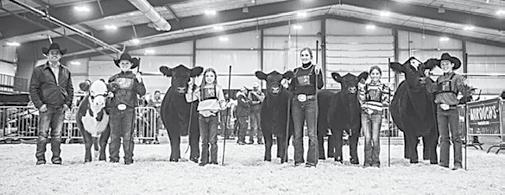
Cheyenne Livestock Exposition
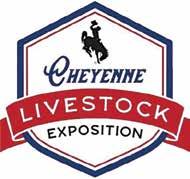
“My office plans to borrow funds from the Legislative Stabilization Reserve Account to continue firefighting operations.”
Approximately $39 million from the state’s Emergency Fire Suppression Account has been used to fight the wildfires plaguing Wyoming this summer and in recent weeks.
“The House Draw Fire, which ignited Aug. 21, was the second-largest in Wyoming history,” Gordon said.
The House Draw Fire burned more than 174,500 acres, and crews continue to battle the now 89,000acre Elk Fire, according to InciWeb.
“The impact of these wildfires will take a while to address. It will take a while to understand what exactly has happened and potential consequences,” he added.
He referenced recent concerns about fire retardants and ash possibly entering community water supplies around the state.
“I want to assure the public we’ve been in contact with the U.S. Environmental Protection Agency and the Department of Environmental Quality,” he said. “We want to ensure we are not only mitigating any impact that might happen now but also plans to recover and protect water supplies and the safety and health of all of our citizens.”
Gordon was asked about his concerns about the wildfires and future funding dur-
ing the conference.
“My hope is we will be able to replenish the funds,” Gordon said. “The issue I am concerned about is the U.S. Forest Service possibly not hiring the usual number of seasonal workers next year. We rely on those individuals as first responders at the outbreak of a wildfire.”
He added, “I am working with federal partners to make sure they understand this is perhaps not as unique of a year as we would like, and we need to make sure we have the resources available under any circumstance.”
A list of resources is currently being compiled and is available at bit.ly/ wy-wildfire
Questions from the press
The first question the governor fielded was in regards to a new proposed law allowing people to be charged with animal cruelty if they run animals down with snowmobiles and don’t kill them immediately.
“I do know livestock producers need to use means to control predators affecting their livestock, but as we saw in the Daniel wolf case, wardens or law enforcement should have the ability to increase the penalty if animal cruelty is recognized,” Gordon said.
“I think everyone is in agreement there needs to be a balance, where cruelty to animals is recognized and penalized but protecting one’s livelihood is understood within reason,” he added.
The governor also
fielded a question about his recent executive order prohibiting state agencies from distributing voter registration materials to non-citizens in the state of Wyoming.
Gordon responded, “It seemed appropriate to make sure the Cowboy State doesn’t participate in any effort giving ineligible voters the ability to register.”
The governor said he’s had several conversations with county clerks who felt the order was helpful.
The order removes any confusion and clarifies state agencies will not enable or facilitate any non-citizen to register to vote or help them to vote.
The governor continued answering questions and commented on a recent online survey from the State Construction Department about allowing concealed carry of guns in the Capitol Extension.
“There’s been a lot of people who have expressed both sides of the sentiment. To me, I think it’s an evolving conversation,” Gordon said. “I would encourage people, if they feel strongly about this issue, to continue to put in their remarks during the comment period.”
Gordon closed the conference by reiterating he will continue hosting online media conferences periodically in the future.
Melissa Anderson is the editor of the Wyoming Livestock Roundup. Send comments on this article to roundup@wylr.net.
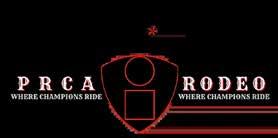
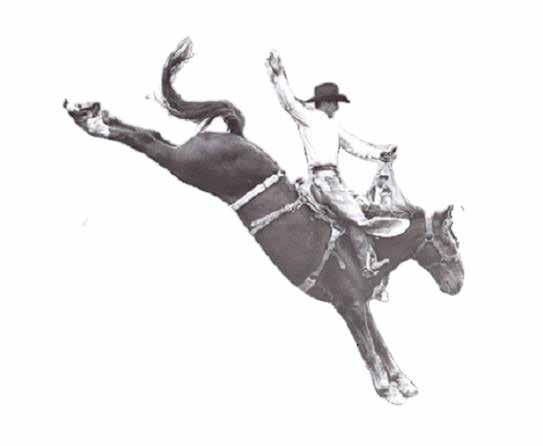


the purpose of the report is to share the center’s contributions with Wyoming residents across the state, and unlike previous reports, the 2023 edition highlights student activities and community-focused programs in addition to LREC’s research.
“This report highlights a unique UW facility serving students, researchers, farmers and ranchers in Wyoming,” Scasta says.
LREC
According to the report, LREC spans just under 9,500 acres from west Laramie to the McGuire Ranch outside of Wheatland, including nearly 9,000 acres of rangeland and about 450 acres of irrigated hay meadow.
LREC raises beef cattle, sheep, swine and hay, with the majority of the center’s hay production occurring in west Laramie using flood irrigation from the Pioneer Canal and Lake Hattie Irrigation District.
LREC is also home to a 20,000-square-foot greenhouse facility used for specialized teaching and research, as well as the Hansen Livestock and Teaching Area, which hosts educational seminars and a wide variety of events.
Scasta and LREC Director Dr. Scott Lake lead operations at the research center, with the help of LREC Accountant Amy Newman, six unit managers and a team of hourly technicians and student workers.
Livestock reports
The LREC Beef Unit is managed by Ben Hollinger and includes a herd of both commercial and purebred cattle, consisting of 147 bred mature cows, 62 crossbred heifers, 68 yearling heifers, three Black Angus bulls, three Hereford bulls and two Red Angus bulls.
Hollinger notes the Beef Unit is currently trying to build a herd of two small subsets of purebred Herefords and Red Angus with a larger set of commercial
crossbred red baldies.
“We are interested in Herefords and Red Angus for their performance at high altitudes and respective levels of susceptibility to brisket or high-altitude disease,” Hollinger says. “The goal is to produce quality crossbred cattle that will thrive at high altitudes.”
He explains UW’s advanced beef production class utilizes the Beef Unit for hands-on learning opportunities. The Beef Unit also helps with UW’s Annual High Altitude Bull Test and Sale every spring.
Kalli Koepke oversees the LREC Sheep Unit, which includes 350 head of mature Rambouillet ewes, 115 head of ewe lamb replacements, seven head of mature sires, four head of teasers, 70 head of feedlot lambs and 11 head of ram lambs.
Koepke notes the Sheep Unit finished the season with a 180 percent lambing rate, 15 percent death loss and 156 percent weaning rate.
In August 2023, Koepke and her team introduced four donkeys into the herd as guardian animals, and since their introduction, the unit hasn’t suffered a single loss from depredation.
“We have also embarked on a new inventory system in 2023 – the Shearwell System,” she mentions. “We have transferred over all of our inventory records to this device and have proceeded to use the system from lambing, weaning, general weights, maternal records and paternal records.”
Koepke further notes the Sheep Unit participates in programs across the state, including the Wyoming Wool Growers Association (WWGA) Ram Test and Sale, UW’s Lamb-AYear program, the Albany County 4-H Sheep Program, UW Extension Sheep Task Force, the 7220 National Wool Invitational, Wyoming 4-H and FFA wool judging
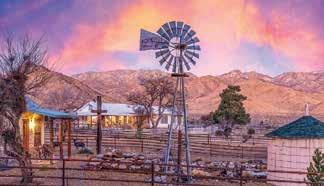
contests and several animal science classes.
In the Swine Unit, Manager Patrick Parker is in charge of 15 breeding sows, five replacement gilts, three boars and 148 2023-born piglets.
All sows are artificially inseminated with purchased semen and the boars are maintained as teasers.
Parker notes the majority of production from LREC’s sows are used to support teaching efforts and the UW Meat Lab.
Judging teams at UW, across Wyoming and from surrounding states utilize the swine herd for practice and contests, and the Swine Unit provides feeder pigs for the 307 Elite Sale.
“There are very few swine herds open to the public, so we have a great opportunity to teach generations about the swine industry,” Parker says.
“The Swine Unit helps with many important Extension, research and teaching activities crucial to UW and the region, including the Wyoming State Fair, the National Western Stock Show, the Albany County 4-H Swine Program, the Showcase Showdown Livestock Judging Contest, the Fourth Grade Rendezvous, the Albany County CattleWomen’s Ag Expo and several animal science classes,” he concludes.
Equine Unit and arena report
Additionally, LREC’s Equine Unit is home to two Quarter Horse saddle horses; the four guardian burros used by the Sheep Unit, which were adopted through the Bureau of Land Management; Cowboy Joe, an American Shetland pony that makes an appearance at UW sporting events and other functions throughout
the year and two Haflinger draft geldings known as Pistol and Pete.
The Equine Unit and the Hansen Livestock and Teaching Arena are overseen by Elias Hutchinson, who notes from 2022-23, the Hansen arena hosted 47 different individual events, including horse clinics; livestock judging and fitting clinics; agility dog competitions; an ag expo; high school, collegiate and ranch rodeos; archery shoots; bull sales and UW Extension seminars, just to name a few.
The equine remuda –excluding the burros – are used to help teach numerous animal science labs and classes throughout the school year.
“The Pistol and Pete draft team are arguably the busiest mascots at UW,” says Hutchinson. “In 2022-23, the team appeared at more than 16 different events on campus and around the state.”
“The team is also used to feed the sheep during the winter at LREC. They feed about one ton a day, five days a week from Dec. 1 to April 1, rain or shine and even in 30-below-zero weather,” he adds. “Unlike a tractor, they always start in the cold.”
Research
The report concludes with a list of research studies conducted at LREC during 2023, including animal science; rangeland, pasture and natural resources and greenhouse research.
A few of the studies within the animal science units include research to understand the effects of choline supplementation on the reproductive performance of ewe lambs in the breeding and non-breeding seasons; sheep foraging behaviors and diet selection on northern mixed-grass
prairie with a high abundance of larkspur; the influence of a stair-step nutritional management strategy on the ovarian development of developing heifers and characterizing feedlot performance and carcass characteristics of finishing cattle with high-altitude disease risk.
Rangeland, pasture and natural resources research taking place at LREC in 2023 looked at targeted disturbance for improved nitrogen mineralization and forage production in meadows; the proportional abundance of songbirds on grazed pasture and foraging behavior of cattle in an adaptive
multi-paddock rotational grazing system, to name a few. Additionally, 2023 LREC greenhouse research projects looked at the impact of weeds on the nutritive quality of the first cutting of alfalfa in Wyoming, biocontrol of Canada thistle, the development of local production capabilities for native bumblebees, restoring native plants for forest and rangeland resilience and the impacts of coal char and biochar on plant growth, among others.
Hannah Bugas is the managing editor of the Wyoming Livestock Roundup. Send comments on this article to roundup@wylr.net.

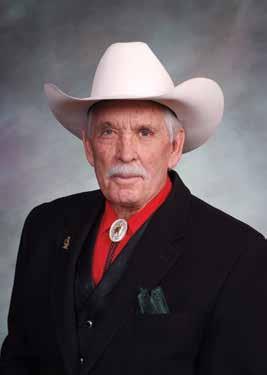
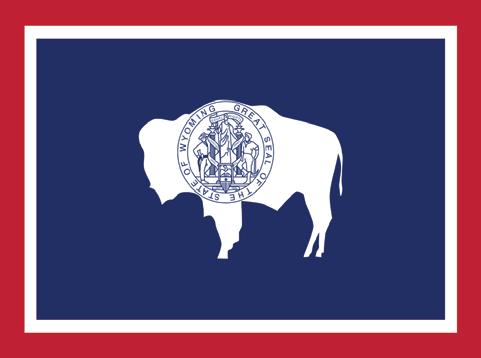
many distinguished alumni and friends, many of whom are here with us tonight,” stated CALSNR Interim Dean Kelly Crane during the ceremony’s opening remarks. “Their support over the years has been invaluable. In many ways – in nearly all ways – we couldn’t succeed without their support.”
Crane continued, “We all stand on the shoulders of giants who have supported us in the past, so we really count on the continued support of our alumni, friends and partners to ensure we can continue to deliver a world-class education, research relevant to the state of Wyoming and continued engagement and support for communities throughout Wyoming.”
This year’s honorees received a limited edition throw blanket from the UW Blanket Project, which was created through efforts by the Wyoming Wool Initiative and the Laramie Research and Extension Center’s (LREC) Sheep Unit.
Leaving a legacy – Art Nicholas offered an acceptance speech during the 2024 Dean’s Legacy Dinner in Laramie on Oct. 11 upon receiving the University of Wyoming Legacy Award alongside
UW graduate has global impact as an Army veterinarian First to be recognized was U.S. Army Major Craig Calkins, deputy commander for Veterinary Readiness Activity-Italy, an international team providing public health and vet services to more than 46,000 Department of Defense personnel in Italy, Spain, Turkey and the United Kingdom.
Calkins is one of two awardees of the 2024 Outstanding Alumni Award.
“This award recognizes people who have done one of three things – they have either distinguished themselves in their profession or life’s work; they’ve made significant contributions to programs related to our college, the state of Wyoming or the nation or they have worked to increase public awareness of the importance and impact of our college and university,” said Crane. “But, in almost all cases, our outstanding alumni awardees have done all three, and this is cer-

tainly the case tonight.”
Dr. Derek Scasta, UW Extension rangeland management specialist and LREC associate director, presented Calkins with his award.
“Calkins is one of Wyoming’s finest,” Scasta stated, noting the Cody-born Wyoming native attended Chadron State University for his undergraduate degree, before enrolling in veterinary school at Washington State University.
In 2012, Calkins entered the U.S. Army Veterinary Corps, then he returned to Wyoming to obtain his master’s degree in rangeland ecology and watershed management at UW.
“From there, Calkins really moved on, and now he has a global impact serving as the deputy commander for the U.S. Army Veterinary Services,” Scasta said.
In 2022, under this role, Calkins partnered with Scasta and UW Extension Sheep Specialist Whit Stewart to organize a oneof-a-kind animal handling training in Scotland for U.S. soldiers.
“I’m really proud to call Calkins a former UW graduate and a colleague, but most importantly a friend,” Scasta concluded. “He is very deserving of this award, and I’m really excited to see him presented with it tonight.”
UW alum remains committed to Wyoming ag National Cattlemen’s Beef Association President and Wyoming Rancher Mark Eisele is the second 2024 Outstanding Alumni awardee.
“Eisele’s journey in agriculture is a testament to his determination, innovation and stewardship,” stated Dr. Ben Rashford,
Spreadable Ag. Gypsum Calcium Sulfate
• pH neutral
• Loosens compacted clay soils
• Treats sodic clay soils
• Delivers Calcium and Sulfur directly to the plant roots
• Ideal for: sugar beets, potatoes, alfalfa hay and more!
• Also great for aquaculture and oil field reclamation
• Available in bulk and 2000 lb totes
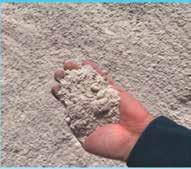
head of the UW Department of Agricultural and Applied Economics, who presented the award.
“With limited opportunities to take over a family operation, Eisele created his own path,” Rashford continued. “As a teenager, he worked on neighboring ranches baling and stacking hay and working cattle. One of those jobs turned into a partnership with the King Ranch, and when the opportunity arose, he took over operations and continued to build it into the success it is today.”
Today, Eisele operates the ranch alongside his wife Trudy and his children Colton, Kendall and Kaycee.
The ranch is renowned for its cooperative work with state and federal agencies, its use of effective conservation strategies and the educational opportunities it provides for students of all ages and walks of life.
Rashford noted Eisele’s commitment to Wyoming agriculture is exemplified through a long list of leadership roles, including one of the founding board members and former president of the Wyoming Stock Growers Land Trust, president of the Wyoming Livestock Board and president of the Wyoming Stock Growers Association.
“Mark is a true leader in Wyoming, embodying the spirit of CALSNR,” Rashford said. “His innovation, dedication and passion for agriculture, the land and the next generation makes him a wonderful nominee for this award.”
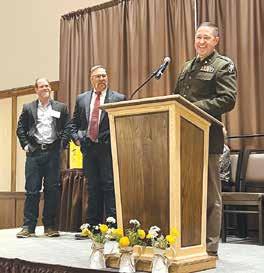
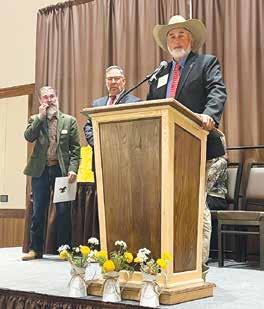
Calkins received a 2024 University of Wyoming Outstanding Alumni Award for his global impact as the deputy commander for Veterinary Readiness Activity-Italy. WYLR photo
Exemplary leadership – National Cattlemen’s Beef Association President and Wyoming Rancher Mark Eisele was awarded a University of Wyoming Outstanding Alumni Award for his exemplary leadership in the ag industry. WYLR photo

In acceptance of his award, Eisele stated, “The journey I’ve had meeting people across the state, across the nation and across the oceans has been amazing. I wouldn’t trade it for anything. I am truly devoted to CALSNR and the university itself. I am humbled and honored to be here today.”
NWSS promotes agricultural education
Next, Crane welcomed representatives of the National Western Stock Show (NWSS) to the stage to receive the 2024 Corporate Partner of the Year Award.
“This award recognizes an organization that has demonstrated outstanding support for our college, and the NWSS has absolutely done this,” Crane stated.
He further noted NWSS established the National Western Scholarship Trust, which aligns with the missions and values of both the stock show and UW CALSNR, while providing support through numerous scholarships within the college.

“The collaboration between the NWSS and CALSNR has been longstanding, benefitting many of our exemplary students,” Crane said. “Over the years, NWSS has continued to expand their contributions.”
NWSS Vice President of Rodeo, Horse and Livestock Operations Leon Vick and NWSS Scholarship
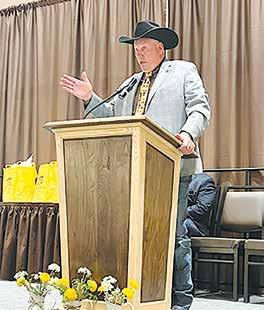
Manager Heather Covalt were in attendance to accept the award.
“The NWSS is a nonprofit organization that has received a numerous amount of support from UW for the past 119 years,” Vick said. “As an agriculture institution with many staff members powered by UW alumni, such as myself, we are honored to receive the 2024 Corporate Sponsorship Award.”
Ranching couple empowers future leaders
To wrap up the ceremony, Crane presented Catherine and Art Nicholas of Wagonhound Land and Livestock with the 2024 Legacy Award.
“This award recognizes an individual or organization whose financial support has been instrumental in helping our programs grow and thrive,” he said. “These gifts are truly transformational to our college.”
Crane noted the Legacy Award places an emphasis on contributions which have helped UW CASLNR address new audiences and needs in order to better serve Wyoming communities.
Earlier in the year, the Nicholases made a gener-
Promoting ag education – Leon Vick, National Western Stock Show (NWSS) vice president of rodeo, horse and livestock operations, accepted the 2024 Corporate Sponsor of the Year Award on behalf of NWSS. WYLR photo
ous donation, which was matched by the Wyoming Legislature, to establish the Wyoming Ranching Excellence Fund within UW CALSNR.
According to Crane, this fund initiated and empowered the Ranch Management and Agriculture Leadership program.
“The support and generosity of Wagonhound Land and Livestock provides essential resources for our students, faculty, program ambassadors, industry engagement and continuing educational opportunities for ranchers and ranch managers across the state,” Crane stated.
While receiving the award, Art said, “I would like to thank CALSNR for this very special recognition. We became involved with this because we wanted to advance ranch leadership and innovation, not only for current ranchers, but for generations to come to ensure Wyoming continues to stay at the forefront of agriculture.”
Hannah Bugas is the managing editor of the Wyoming Livestock Roundup. Send comments on this article to roundup@wylr.net.
catalog for 1891-92, were located in Laramie, Lander, Saratoga, Sheridan, Sundance and Wheatland.
College of Agriculture
The College of Agriculture believes in the power of education, innovation and community to shape a sustainable and prosperous tomorrow, cites the UW website.
According to records from the American Heritage Center at UW, agricultural activity occurred mainly at the experiment stations during the early years of the university since few students were enrolled in a formal college program.
“The college graduated its first student in 1899, its second in 1903 and its third in 1905,” reads the historical records. “Also, in 1905, the first Wyoming farmer’s institute was held in Cody.”
Livestock research was encouraged when the university acquired the Wyoming Territorial Penitentiary building and grounds in 1907.
The facility was used as a stock farm, and later the same year, domestic science courses were taught, notes the UW records.
As enrollment in the college program began to rise, new departments were organized and buildings were added or improved.
Records state, “Agriculture and agronomy were separated from animal husbandry and veterinary sci-
ence in 1912, and a new building – the Agricultural Hall – was completed in 1914.”
In 1923, the university took control of state farms which were previously separate from the experiment farms.
However in 1946-47, a bill was introduced to create an agricultural college separate from UW in Sheridan, but failed it.
A new addition to campus
“In 1949, the cornerstone was laid for a new College of Agriculture building, which was dedicated the following year, although full occupancy was not achieved until 1952,” the records state.
The building received a significant addition in 1981, which more than doubled the size of the building.
Immediately behind the new addition was the annex, housing the sales room where one could purchase cheese, ice cream and other products produced by the UW dairy farm.
The sales room closed in the 1970s and was demolished in 2013.
Continued success
According to UW records, around the early 1950s, the college claimed 300 students and 30 faculty, and by 1982 numbers had increased to 700 students and 120 faculty. A six-story addition had also been added to the building.
Departments at the time included agricultural

BIG SELECTION OF BIG TEX TRAILERS 60 TRAILERS IN STOCK
2013 WESTERN STAR 4900 DAY CAB, 555,547 MILES, ISX 550 CUMMINS, 18 SPD TRANS., 46,000 LBS REAR, 390 RATIO WET KIT, 1 LIFT AXLE – $59,500 2013 MACK 600, 306,406 MILES
EXTENSIVE ENGINE WORK DONE – $39,500
2006 INTERNATIONAL 9200 DAY CAB, 292,298 MILES, 12,695 ENGINE HOURS, CAT C-13 ACERT ENGINE, 10 SPD SHIFT TRANS., JAKE BRAKE, STATIONARY 5TH PLATE – $39,500
2007 CTS BDT-40 T/A BELLY DUMP – $26,500
2019 BOBCAT T870 SKID STEER, 2145.1 HRS – $49,500
2018 BOBCAT T650 SKID STEER, 2274.5 HRS – $ 39,500
2022 BOBCAT E60 MINI EXCAVATOR 2022 BOBCAT T770 SKID STEER 2008 BOBCAT T250 SKID STEER
2016
JD 5093E TRACTOR
economics, agricultural engineering, animal science, biochemistry, home economics, microbiology and veterinary medicine, plant science and range management.
Departments of the college underwent frequent alterations as science improved and the needs of the state developed.
The college became the College of Agriculture and Natural Resources (CANR) in 2009, and the UW Cooperative Extension Service was renamed UW Extension in 2011.
By 2018, college departments included agricultural and applied economics, agricultural communications, animal science, ecosystem science and management, family and consumer sciences, microbiology, molecular biology, plant sciences and veterinary sciences, with the Agricultural Experiment Station and UW Extension also housed under the administration of
the college.
In 2022, UW incorporated the departments of botany, life sciences, zoology and physiology into CANR, creating the College of Agriculture, Life Sciences and Natural Resources (CALSNR).
Today, CALSNR is a beacon of academic excellence in agricultural and natural resource education.
Committed to providing a comprehensive and interdisciplinary approach, the college prepares students to address real world challenges.
With renowned faculty guiding cutting-edge research and hands-on experiences, graduates are equipped with the skills to contribute significantly to agriculture, life sciences and the preservation of natural resources.
Melissa Anderson is the editor of the Wyoming Livestock Roundup. Send comments on this article to roundup@wylr.net.
New guide available
The University of Wyoming Extension has released a new, user-friendly resource to help gardeners, landowners and agricultural producers identify effective weed control options.
The digital guide, which is presented in an easy-toread table format, offers treatment suggestions for specific Wyoming state-designated noxious weeds, countydeclared weeds and common garden weeds.
Potential control methods for each weed are ranked as effective, somewhat effective and ineffective.
In addition to the table, which lists treatment options for more than 50 weed species, the guide also provides general weed control tips and recommendations for further reading.
While the guide was compiled with Wyoming residents in mind, many of the species listed also affect gardeners and producers on a larger regional scale.
Depending on the target species, control options may include hand pulling, tilling, mowing, revegetation or outcompeting, smothering, grazing, herbicide treatments or biological control. If more than one option is listed as effective, it is suggested to experiment with a combination of strategies, an approach which often improves overall control.
To download a free copy of the new publication, titled “Weed Treatment Options,” visit bit.ly/weed-treatment
For assistance with weed identification, contact a local Extension or weed and pest district office. For advice on creating a comprehensive management plan, contact a local weed and pest office.
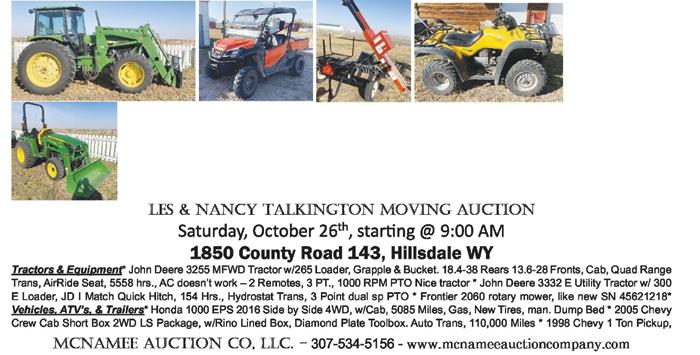

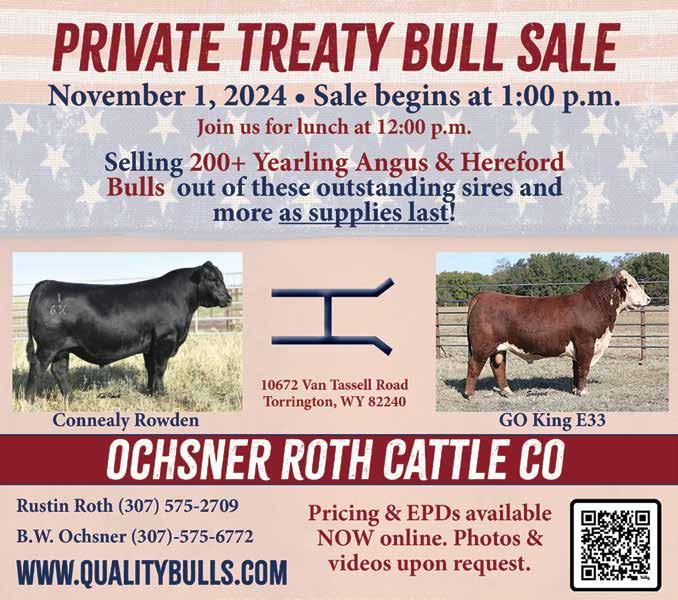
Oct. 21 UW in Your Community Event, 5-7 p.m., Washakie Museum and Cultural Center, Worland. For more information, visit uwyo.edu/news/2024/10/uw-inyour-community-event-oct-21-in-worland.html
Oct. 21-22
Wyoming Water Association Annual Meeting and Conference, University of Wyoming Conference Center, Laramie. For more information or to register, visit wyomingwater.org
Oct. 22 Wyoming Beef Council Virtual Meeting, 7 p.m., online. For more information, contact Ann Wittmann at 307-777-6399 or ann.wittmann@wyo.gov.
Oct. 22-24 The Center for Food Integrity Transparency Summit 2024, Chicago, Ill. For more information or to register, visit empoweredevents.eventsair.com/cfitransparency-summit
Oct. 23-24 University of Wyoming Giving Day, 12 p.m.-12 p.m. For more information or to donate, visit uwyo.edu/givingday
Oct. 23-26 97th National FFA Convention and Expo, Indiana Convention Center, Indianapolis, Ind. For more information, visit convention.ffa.org
Oct. 24
University of Wyoming Private Pesticide Applicator Education Program 8 a.m.-12 p.m., Platte Valley Bank, Torrington. For more information or to RSVP, contact Linda Farrier at 307-532-2436 or goshen.county@uwyo.edu.
Oct. 24-27 American Hereford Association Annual Membership Meeting and Conference, Kansas City, Mo. For more information, visit hereford.org/aha-events/ annual-meeting/
Oct. 25-26 Stockmanship and Stewardship, Hamburg, N.Y. For more information, visit stockmanshipandstewardship.org/
Oct. 27-31 Western Seed Association 2024 Annual Convention, Kansas City, Mo. For more information, visit westernseed.org
Oct. 29 Nebraska Beef Quality Assurance and Beef Quality Assurance Transportation Certification, 4-6 p.m., Prairie Winds Community Center, Bridgeport, Neb. For more information, e-mail nebraskabqa@unl.edu or call 308-633-0158.
Oct. 29-31 Wyoming Weed and Pest Council Annual Conference, Casper. For more information, visit wyoweed.org
Oct. 31-Nov. 2 West Central States Wool Growers Convention, Boise, Idaho. For more information, visit idahowoolgrowers.org
Nov. 1 Ranching for Profit After the Fire Workshop, 1-5 p.m., Community Building, Johnson County Fairgrounds, Buffalo. For more information, contact Heidi Stoltz at 307-461-3571 or Emily Nielsen at 307-412-9937.
Nov. 1-4 2024 Angus Convention and Trade Show, Fort Worth, Texas. For more information or to register, visit angusconvention.com
Nov. 2 17th Annual Tribute to the Great American Cowboy PRCA Rodeo, 7 p.m., Central Wyoming Fairgrounds, Casper. For more information or to buy tickets, visit greatamericancowboyrodeo.com
Nov. 4-6 2024 Wyoming Society of Range Management Meeting, Ramkota Hotel, Casper. For more information or to register, visit bit.ly/3ZG7A8o
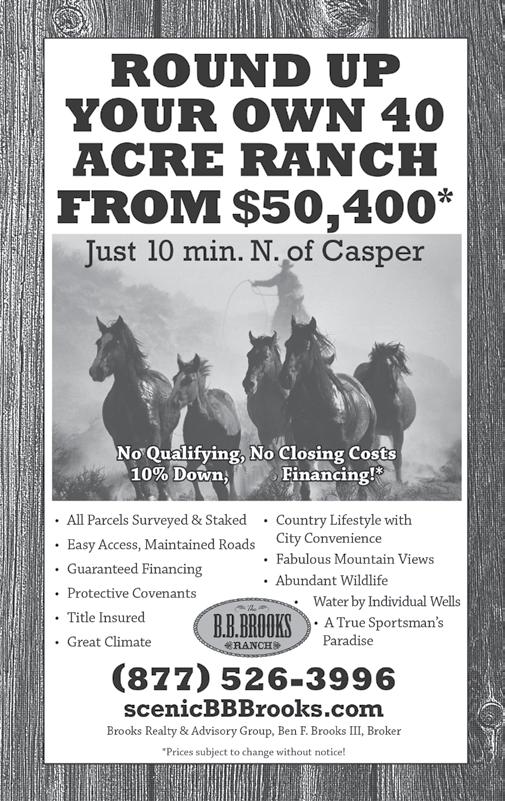
Oct. 23 Micheli Ranch Bull Sale, at the ranch, Ft. Bridger, 307-252-0437, 307-7477786, 307-747-3897, 307-780-8232, micheliranch.com
Oct. 26 Les and Nancy Talkington Moving Auction, 1850 County Road 143, Hillsdale, 307-532-4976, 307-534-5156, mcnameeauctioncompany.com
Oct. 31 Marcy Livestock Mature Cow Herd Dispersion, Gordon Livestock Auction, Gordon, Neb., 308-430-2005, marcylivestock.com
Nov. 1 Ochsner Roth Cattle Co. Private Treaty Bull Sale, at the ranch, Torrington, 307-575-6772, 307-575-2709, qualitybulls.com
Nov. 3
Nov. 4
Nov. 9
Triangle J Ranch Harvest Select Female Sale, at the ranch, Miller, Neb., 308-627-5085, 308-457-2505, 308-293-9241, trianglejranch.com
Pharo Cattle Company Fall Sale, Burlington Livestock Exchange, Burlington, Colo., 800-311-0995, pharocattle.com
Leachman Cattle of Colorado Fall Harvest Sale, Leachman Bull Barn, Fort Collins, Colo., 970-568-3983, leachman.com
Nov. 9 Carlson Equipment Fall Consignment Auction, Riverton, 307-856-8123, carlsonequipment.com
Nov. 11
Nov. 14
Nov. 16
Nov. 16
Nov. 17
Nov. 18
Nov. 21
Nov. 21
Nov. 23
Nov. 25
Nov. 26
Ludvigson Stock Farms Fall Herdbuilder Bull and Female Extravaganza Sale, Diamond Y Development Center, Park City, Mont., 406-601-9192, ludvigsonstockfarms.com
Bieber Red Angus Ranch Fall Female and Bull Sale, at the ranch, Leola, S.D., 605-439-3628, bieberredangus.com
Pharo Cattle Company Fall Sale, Headwaters Livestock, Three Forks, Mont., 800-311-0995, pharocattle.com
Redland Angus Annual Production Sale, Buffalo Livestock Marketing, Buffalo, 307-250-1548, redlandangus.com
The Wyoming Angus Association 14th Annual Wyoming Select Female Sale, Grace Werner Ag Pavilion, Casper College, Casper, 307-630-1593, wyomingangus.org
2024 J&L Montana Angus Female Bonanza, PAYS, Billings, Mont., 406-8615664, 406-690-1150, northernlivestockvideo.com
K2 Red Angus Fall Female Sale, K2 sale barn, Wheatland, 307-331-2917, k2redangus.com
Largent and Sons “Prime Fuel” Sale, at the ranch, Kaycee, 307-738-2443, 307-267-3229, largentandsons.com
Pharo Cattle Company Fall Sale, Valentine Livestock Auction, Valentine, Neb., 800-311-0995, pharocattle.com
The Berry’s Herefords Annual Bull Sale, at the ranch, Cheyenne, 307-6345178 and 307-630-7944
Paint Rock Angus Annual Fall Sale, at the ranch, Hyattville, 307-469-2206, 307-271-2000, 307-272-5332, 307-578-7392, paintrockangus.com

POSTCARD from the Past
Compiled by Dick Perue rrichardperue@gmail.com

Game Numbers Low in 1912
A drastic winterkill of wildlife just a couple of years ago and two articles in a recent edition of the local newspaper shows some things never seem to change.
First was an item announcing a study to learn why the deer herd is presently so low in this area. Further back in the Reflections was the following editorial from December 1912. Sounds familiar.
year, until now the only game left is away back and has no winter range. The winters are killing more game from lack of range than all of the hunters put together.
We have long been a supporter of the protection to game, but we have now reached a point where we have drawn new conclusions. Civilization, cultivation and reclamation of the agricultural lands of the West are getting the game. The hunter might just as well have his share, so long as he does not play the hog, as long as the game lasts.
The range is going rapidly for all game, and there is little left for them but the interior of the roughest mountains. The settler encroaches upon the big game and drives him back farther and farther every
After many years of strife to preserve the big game in this state, we are slowly drifting toward the utter extinction of the same. It may be well to drag the preservation out as far as possible, to prolong the hunting, but what is the use of all the talk about closing the season on this or that or feeding the elk?
The ranchman and farmer have come to stay. Give them the fruits of their labors in the country they choose. It is only a little time until the big game is gone. It is useless to put a closed season on them. They are killed anyway, and their extinction from hunters, ranchers and breakers of the law is only a matter of time, no matter what the law or money spent to prevent it finds. Fortunately, this dire prediction didn’t materialize, thanks mostly to good big game management and the support of most ranchers in Wyoming. Since my arrival in this valley in 1938, our family has noted many ups and downs of the game herds, usually on about a seven-year cycle. I’ll bet the new expensive study will find the same. –
Dick Perue
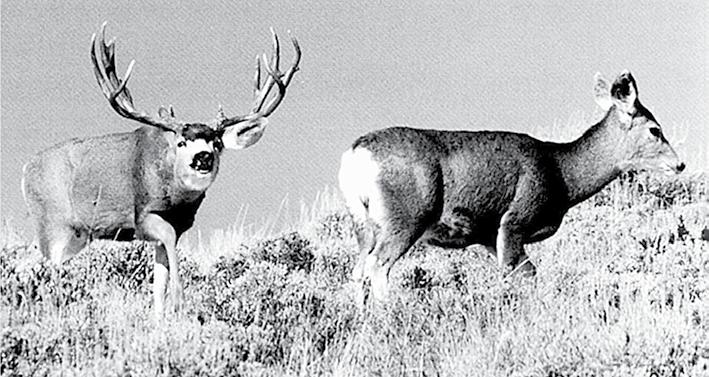
Source: USDA AMS Livestock, Poultry & Grain Market News, Greeley, CO National Sheep Summary
As of October 11, 2024
Compared to last week slaughter lambs mostly weak to 20.00 lower, except at New Holland, PA 10.00-30.00 higher. Slaughter ewes steady to 15.00 higher. Feeder lambs steady to 16.00 higher. At San Angelo, TX 7,086 head sold in a one day sale. Equity Cooperative Auction sold 340 slaughter lambs in North Dakota and 1100 feeder lambs in Wyoming. 3,817 lamb carcasses traded with no trend due to confidentiality. All sheep sold per hundred weight (CWT) unless specified. Slaughter Lambs: Choice and Prime 2-3 San Angelo: wooled and shorn 115-140 lbs 140.00-158.00. Ft. Collins: wooled and shorn 130-155 lbs 147.50-174.00. South Dakota: wooled and shorn 110-165 lbs no report. Billings: wooled and shorn 125-135 lbs 142.00-144.00. Equity Coop: Tappen Pool 147 lbs wooled 152.50. Slaughter Lambs: Choice and Prime 1-2 San Angelo: hair 40-60 lbs 228.00-270.00; 60-70 lbs 220.00-255.00, few 260.00-268.00; 70-80 lbs 190.00-238.00, few 244.00-255.00; 80-90 lbs 180.00-202.00; 90-110 lbs 170.00-196.00, few 200.00. wooled and shorn 75 lbs 194.00; 85 lbs 180.00.
Ft. Collins: wooled and shorn 60-70 lbs 180.00-187.50; 80-90 lbs 165.00-190.00; 90-100 lbs 150.00-160.00; 117 lbs 167.50. hair 41 lbs 207.50; 51 lbs 210.00; 61 lbs 215.00; 77 lbs 207.00. South Dakota: no report.
Billings: wooled and shorn 83 lbs 155.00; 98 lbs 133.00; 101 lbs 127.50. hair 54 lbs 194.00; 72 lbs 141.00; 80-90 lbs 129.00-130.00; 90-100 lbs 131.00-136.00. Slaughter Ewes
San Angelo: Good 3-4 (very fleshy) no test; Good 2-3 (fleshy) hair 100.00; Utility and Good 1-3 (medium flesh) 102.00, hair 88.00-110.00; Utility 1-2 (thin) 80.00-86.00, hair 77.00-92.00; Cull and Utility 1-2 (very thin) hair 628.00-8077.00; Cull 1 3450.00-5166.00.
Ft. Collins: Good 3-4 (very fleshy) 92.50; Good 2-3 (fleshy) 77.0097.50; Utility 1-2 (thin) no test; Cull 1 no test.
South Dakota: Good 3-4 (very fleshy) 77.00; Good 2-3 (fleshy) 60.0065.00; Utility 1-2 (thin) 63.00-64.00; Cull and Utility 1-2 (very thin) 51.00; Cull 1 30.00. Billings: Good 3-4 (very fleshy) 79.00-82.00, hair 73.00; Good 2-3 (fleshy) 76.00-85.00, hair 86.00; Utility 1-2 (thin) 60.00-74.00, hair 56.00; Cull 1 47.50-56.00.
Feeder Lambs: Medium and Large 1-2
San Angelo: 50 lbs 270.00. hair 30-40 lbs 275.00-305.00; 40-50 lbs 270.00-296.00; 50-60 lbs 250.00-260.00. Ft. Collins: 30-40 lbs 205.00-215.00.
South Dakota: 33 lbs 240.00; 40-50 lbs 212.50-243.00; 50-60 lbs 208.00-228.00; 60-70 lbs 202.00-217.50; 70-80 lbs 176.00-205.00; 8090 lbs 169.00-179.00; 90-100 lbs 157.00-159.00; 100-110 lbs 141.00145.00; 110-120 lbs 129.00-138.00. Billings: 48 lbs 214.00; 50-60 lbs 214.00-218.00; 60-70 lbs 198.00208.00; 70-80 lbs 160.00-180.00; 80-90 lbs 150.00-165.00; 90-100 lbs 137.00-144.50;
Ft. Collins: no test.
South Dakota: ewe lambs 65 lbs 195.00/cwt, 96 lbs 161.00/cwt; yearlings 210.00-285.00/head; young 135.00-235.00/head; middle age 135.00-180.00/head; aged 100.00/head.
Billings: ewe lambs 101 lbs 145.50/cwt; yearlings 161 lbs 109.00/cwt; middle age 135-160 lbs 55.00-64.00/cwt. hair lambs 56 lbs 213.00/cwt, 75 lbs 161.00/cwt, 90 lbs 137.00/cwt.
Sheep and lambs slaughter under federal inspection for the week to date totaled 37,000 compared with 36,000 last week and 35,000 last year.
Source: USDA AMS LPG Market News, San Angelo, Texas
National Wool Review
As of October 11, 2024
Australian Wool Exchange
Domestic wool trading had no confirmed trades reported this week. Prices reflect trades FOB warehouse in original bag or square pack, bellies out, some graded, and 76 mm or longer. No allowance made for coring, freight, or handling fees at the warehouse level to reflect net grower prices. Wools shorter than 75 mm typically discounted .10-.20 clean. Classed and skirted wools usually trade at a .10-.20 premium to original bag prices. Australian Wool Exchange Clean Del Price Change from 75-85 Percent Micron US
Source: USDA- CO Dept of Ag Market News Service, Greeley, CO Wyoming Hay Summary As of October 17, 2024
According to producers, movement and demand is light for this time of year all over Wyoming. According to the Wyoming Crop Progress Report, as of October 13th, 2024 Alfalfa Hay 3rd
dry to severe dry soil moisture. According to the National Weather Service Website precipitation is below normal for this time of year and temperatures have been a little higher than normal for this time of year. Eastern Wyoming
Helping those affected by the fires in Wyoming and Montana:
One FREE 4 week classified line ad available for anyone with the following to give and for those in need:
• Pasture
• Fencing supplies and businesses
• Hay and feed
Call the Wyoming Livestock Roundup to place a classified line ad at 307-234-2700 or e-mail roundup@wylr.net
NORTHEASTERN COLORADO FARM AND RANCH IS IN SEARCH OF FULLTIME, SELF MOTIVATED, RESPONSIBLE PERSON WITH KNOWLEDGE OF ALL ASPECTS OF TAKING CARE OF CATTLE: Some farming and haying. Housing available. Salary dependent on experience. Work pickup provided. Send resume, references and work history to bkkramer.kk@ gmail.com. Call Kim at 970520-2513 11/2
NOW HIRING: CDL A TRUCK DRIVERS AND FRONT END LOADERS. Home daily, seasonal sugarbeet rehaul. Location: Worland or Lovell, WY. Drivers earn up to $1,900/week. Loaders earn $25/hour. Flexible work schedules. Drivers must have CDL A with doubles endorsement. To apply, please call 651-364-9578. To view photos, go to www.wylr.net in the classifieds 10/19
Financial Services
AGRI-ONE FINANCIAL: Farm/ ranch and all commercial loans. RATES AS LOW AS 5%. We have been helping with all aspects of agricultural, commercial financing and management for years. LET US HELP YOU on a consulting level with management to increase profitability, deal with and fix credit problems and for all your financing needs. WE CARE AND HAVE WORKING PROGRAMS designed for the farmer/rancher and not the banker. Please call Steve, 303-7733545 or check out our website www.agrionefinancial.com. I will come to you and get the job done!! 11/2

FOR SALE: Wyoming registered 1 iron (2) letter brand registered on all 3 species and in good locations, RRC, RSS, RSH. One hot iron available. Asking $5,000 for this easy to read brand, registered until 2031. Call or text 307-2542790 if interested 10/19
WYOMING SINGLE IRON SHEEP BRAND FOR SALE: RSS, backwards B on the right shoulder sheep. $5,000. Call Kelly Burch at 307-259-2134 11/2
TWO WYOMING

BRANDS FOR SALE: First brand: RHC, RHH. Second brand: LRC, LHH. Both have left ear notch. No irons. $7,000 for both. Call 307-331-1522 10/19

REIGSTERED WYOMING BRAND FOR SALE: RRC, RHS, RSH. $2,000. 307331-2804 10/19

REGISTERED WYOMING BRAND, RBH, renewed to March 2025, $1,000. Call 307630-0359 10/19


fat cattle. This person will need to be a team player who is seeking a long-term position. You will have the opportunity to work with and learn from some of the best in the industry. We offer a benefits package that includes health insurance, dental, vision, 401(k), health savings, life insurance and paid vacation. Retention bonus offered to full-time employees. Incentives paid out at 6 months and 1 year of employment. If you are interested stop by and fill out an application or visit our website at
Call Brandon Furr at 402-257-7769 or 402-746-2222 for more information.
REMOTE NORTHEAST WYOMING RANCH IS LOOKING FOR A FULL-TIME FARM/ RANCH EMPLOYEE: This position is open immediately. Applicant must be self-motivated, reliable and responsible with knowledge of haying and farming. Mechanical skills are a must. Farming duties include: Swathing, baling and raking hay, etc. THIS IS NOT A COWBOY POSITION, but applicant will need to assist in all aspects of cattle work as well. Those duties include calving heifers, feeding hay, branding and gathering, etc. Nearest big town is 60+ miles and nearest K-12 school is 30+ miles away. Housing is provided and on a school bus route. Please send resume with references by mail or email to: PeeGee Ranch, 1251 Lower Powder River Road, Arvada, WY 82831, pgranch@ rangeweb.net. Call 307-7362461 11/2

ENGLISH SPRINGER SPANIEL PUPPIES FOR SALE!!
AKC registered and ready for forever homes. First shots included. Call to reserve!! 307-575-2230. Follow us on Facebook: Wunderful Spring Canyon Springers. To view photos, go to www.wylr.net in the classifieds 10/26
FOR SALE: NINE-WEEKOLD MALE BORDER COLLIE PUPPY. Sire is Kathy Knox’s Seth. Dam is a daughter of Jack Knox’s Coach. Call for more details, 660988-8422 11/2
LGD PUPPIES BORN JULY


Horses


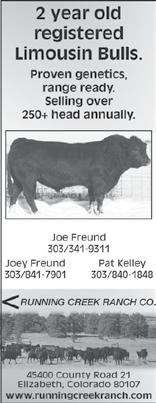
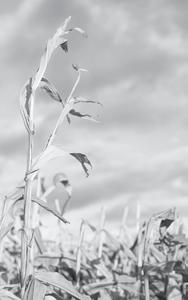
LOOKING FOR COWS TO WINTER AND CALVES TO BACKGROUND
4: Mother is Akbash/Komondor, sire is Pyrenees/Akbash/ Anatolian. Dogs and flock are comfortable together. Mother is proven predator control. Weaned, 2 females left. $450. ALSO, FREE TO A GOOD HOME with room to exercise “Blue” one-year-old blue merle, very friendly, neutered male, gentle, a great pet. Call 406-707-0244 10/19 Excellent feed and facilities. Located at Martin, S.D. 605-515-3540 Leave a message or send a text
38 HEAD FANCY BLACK ANGUS BRED HEIFERS: Originated from the Moore Ranch and have Schiefelbein genetics. 100% AI bred to Sitz Dignity and Beartooth Atlantis, to calve March 1. Call 307-391-1474 11/9
250 BLACK ANGUS BRED HEIFERS: South Dakota origin, OCVD, exposed to proven LBW Black Angus bulls for 45 days. Start calving Feb. 1, 2025. References available. Call 785-394-1955 (cell), 785-394-2374 (home) or 785731-5067 10/19
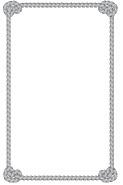
AVAILABLE NOW TO FEED YOUR CATTLE: Lots of good feed for cows and yearlings. Can feed a balanced diet or however you want them fed to fit your budget. From now to May or whenever you’re ready to have them back. Will do it on the cost of feed. ALSO, FOR SALE sorghum/sudan hay, net-wrapped round bales, tested safe. Call Barry, 402-750-9155 to make arrangements 10/19
Cattle Wanted
LOOKING FOR 200 HEAD OF COWS on a year-round basis, 45 years of experience. Epp Cattle Company, Lisco, NE. Call 308778-6104 11/9
Pasture
APPROXIMATELY 500 IRRIGATED ALFALFA/GRASS ALONG WITH 250 ACRES OF GREAT GRAZING: This year there is a ton of feed to pasture off. Running water. Located north of Cody, WY on Heart Mountain. Should handle 400-500 head for 2-3 months, $1.20 a head per day. ALSO, approximately 500 tons of hay, $150/ton. Call 307899-7755 11/9
IS HERE!! Round up your BEST BOOT BUYS for SCHOOL, ARENA and RANGE!! $AVE on HONDO, BOULET, JUSTIN WORK BOOTS, TWISTED X (boots and shoes)!! GREAT SELECTION of, WORK GLOVES, TACK, CHINKS and more. Everyday low prices!! WE CAN ship!! Shop Moss Saddles, Boots and Tack, 4648 West Yellowstone Highway, Casper, WY, 307-472-1872. Our family serving yours for 50 years!! Check us out on Facebook or our website 10/19
feed cattle from start to finish. Good facilities, late model equipment and scale. Lots of added winter protection. ALSO, WILLING TO FEED and take care of your breeding bulls year-round.
MOLLY MULE FOR SALE: Rides and packs. Backcountry experience. Sweet personality. Friendly and gentle. Shoes easy. Meets you at the gate. Ten years old. Cody, WY area, $10,500. Call 307-413-0767, e-mail wachobdoug@gmail.com. To view photos, go to www.wylr.net in the classifieds 11/9 FOR SALE: Blue roan draft cross weanling colts. For more information, call 307-467-5651, leave message 10/19 TRITICALE SEED READY FOR FALL PLANTING: High yield, makes excellent forage and cover crop. Can be grazed fall and winter and hayed in the spring. Call 308-430-3457 for pricing and delivery. Phone calls only 10/26 Seed
WEANER PIGS FOR SALE, located in Powell, WY. For more information, call 307271-1014 1/18
HAY FOR SALE: Alfalfa, mix and grass. Rounds and squares. Call 605-670-9242 10/19
1,000 LARGE ROUND GRASS
BALES: No rain, $130/ton. Call Pete Bertolino at Roberts, MT, 406-425-1351 TFN
CERTIFIED BARLEY STRAW FOR SALE, 3x4 bales. Cody, WY. Call 307-899-1952 TFN
HAY FOR SALE: 3x3 and round bales of grass or alfalfa/grass mix. Prices starting at $70/ton. FOB. Delivered only. Call 605840-0015 10/19
GRASS HAY EXCELLENT ROUND BALES VERY REASONABLY PRICED!! Call 970522-5030 10/19
ALFALFA HAY FOR SALE: Approximately 65 5’x5’ round bales weighing 1,200 lbs. each. Located south of Baggs, WY 30 miles or 7 miles north of Craig, CO. Super easy access off highway 13. Will load your trailer for you. $90/bale. Call or text 970-404-0002, please make multiple attempts to contact, as cell coverage isn’t always dependable 10/26
HAY FOR SALE: 2023 and 2024, alfalfa, sainfoin, alfalfa/ grass mix, grass and combine grass/straw. Small squares and 3x3x8 sales. Test results available for all baled in 2023. Will load 3x3s in open truck and trailer. Call 307-250-6005 11/2
HAY FOR SALE: Good 2024 small square bales mixed grass, timothy/orchard/brome/garrison/red clover and some alfalfa. First and second cutting. $200/ ton at 34 bales or $6/bale. Some tested at 12% protein. Arapahoe, WY area. Call 307-3499994 11/2
HAY FOR SALE: 2023 milo and grass/alfalfa. 2024 first cutting 90% alfalfa/10% grass mix, grass mix, grass/alfalfa, millet, milo, CRP cut early, green and high, non-raked and clean. ALSO, new seeding hay field oats/kosha/crested wheat. All in net-wrapped round bales. Semi load delivery available. Call for pricing, ask for Klint, 701-290-4418, send a text if no answer or keep trying 11/2
HAY FOR SALE: Large quantities!! Grass and alfalfa. Cow and horse quality. ALSO, forage wheat. 2023 hay still available. Small squares, 3x3 square bales and 3x4 square bales. Delivery available!! Call 307630-3046 11/2
BARLEY STRAW: Certified weed-free small squares, $4/ bale. ALSO, 5x6 round bales, $125/ton. GRAIN OATS, wheat and barley $20/cwt. Greybull, WY area. Call 307762-3878 or 307-899-4714, leave message 11/2
LARGE ROUND BALES OF NET-WRAPPED GRASS AND ALFALFA HAY FOR SALE: Delivered in semi loads. ALSO, custom hay hauling with 53’ step deck. Call 605770-6453 10/26
HAY AND STRAW FOR SALE: Round bale grass, net wrapped, 2023 crop $100/ton, new crop $125/ton. ALSO, round bale barley and oat straw, net wrapped, $90/ton. FOB Powell, WY. Call 307-254-5115 or 406480-1248 10/26
600 TONS 2023 GRASS/ALFALFA IN LARGE ROUNDS: Cut slightly mature but baled green!! ALSO, selling 2024 LR certified wheat straw and millet hay. Will deliver!! For sale by Cheyenne, WY area producer. Call 307-630-3768 10/26
GRASS HAY FOR SALE: 3x4 bales, some barn stored, some outside. No weather damage. ALSO, alfalfa hay for sale 3x4 bales. Test available upon request. Riverton, WY. Call 307709-6290 10/26
HORSE QUALITY GRASS HAY, first, second and third cuttings, $150-$200/ton. OAT/PEA MIX, $150/ton. All 3x4 square bales. COW HAY, nice green millet, $110/ton. Big square or round bales. Square bales barn stored. Tests available. Lusk, WY. Call Paul Hicks, 970-2035019 10/26
ROUND-BALED GRASS: 2023 $50/bale; 2024 $60/ bale. 1,000 lb. net-wrapped bales. Cody, WY area. Call, don’t text, Anthony at 307254-2645 3/1
REDUCED PRICING BECAUSE OF THE TRAGIC FIRES. Tons and tons of hay for sale: Alfalfa, alfalfa/grass mix, straight grass (crested wheat and native grasses), winter wheat, 1,300-1,350 lb. net-wrapped round bales. Deliveries are available if needed or come and get it. Sheridan, WY area. Call the ranch, 307737-2680 or 702-501-4243 (cell) 10/26
2024 FIRST CUTTING HORSE QUALITY HAY: Timothy/orchard/brome with a bit of alfalfa at 14% moisture. 110 round bales averaging 1,450 lbs./ bale. Located in Clark, WY. No rain. Currently tarped. $175/ ton. Call 847-420-9615. To view photos, go to www.wylr.net in the classifieds 11/2
CERTIFIED ORGANIC ALFALFA/GRASS MIX HAY. Horse Quality. Call 307-6314104 10/19
STRAW FOR SALE: 250 TONS OF BARLEY STRAW, 4x4 squares, $50/ton. Located west of Powell, WY. Call or text 307-202-0532 for more information 10/19
HAY FOR SALE: 150 tons of excellent quality, second cutting, alfalfa hay in round bales from the Lander, WY area. $150/ton. Call 307-349-4063 10/19
CERTIFIED WEED-FREE PURE ALFALFA HAY: Small squares, covered. 2023 first and second cutting available. 2024 first cutting available. Will load trucks and any open trailer. MONIDA OATS: Combine run. Will auger into truck, trailer or large totes/ ag bags. STRAW: Small squares available. Located between Powell and Cody, WY. Call or text Knopp Farms for details, 307254-0554 11/9
HAY FOR SALE!!! Alfalfa, alfalfa/grass mix and grain hay in both round and square bales. Large quantities available. Trucking available with hay trains. THE HAY YARD IS OPEN, conveniently located off I-90 and Johnson Ln. exit in Billings, MT, small to large quantities. Call us today for your fall hay needs. Montana Hay Company, 406-670-6551 11/9
Equipment
EQUIPMENT FOR SALE, FARMER RETIRING: 9600
John Deere combine with 930 30’ grain header and an 893 8 row 30” corn header. A 20’ Krause offset disc (new blades in front). 24’ Model 630 John Deere tandem disc. Safety pull with a bull hitch. John Deere front suitcase weights. IHC front suitcase weights. Round John Deere wheel weights. Two 1,000 gallon fuel tanks with pumps. 500 gallon round fuel tank with stand. Contact Greg Keller at 406-679-1136 11/9
2018 GREAT PLAINS 13’ END WHEEL ALL SEED DRILL: Model #1300-2606, like new. Call Kelly Burch, 307-2592134 11/2
FOR SALE: John Deere 3940 silage cutter with 2 row 30” corn head. Lorenz 16’x29’ stackmover with walking tandems and 1,000 PTO. Vermeer 7000 bale processor with hydraulic deflector. Rowse 9’ 3 pt. mower with New Holland head. Gehl 12 wheel v-rake. New Holland 195 manure spreader, 410 bushel with slop gate. 2015 Volvo (day cab), 10 speed manual, D13 455 HP, air ride, A/C, cruise control, 229” wheelbase, 11r 22.5 tires with aluminum rims, quarter fenders, 423,000 miles, very clean truck, runs great. Two H&S 7+4 16’ chuckwagons with bunk feeding extensions and tandem 14 ton running gear. John Deere 716A chuckwagons with John Deere running gear and bunk feeding extensions, been shedded, nice condition. Wilson portable wheel corral. 24’ portable ground hay/ bale feeder. 12’ HD box scraper with tilt. Farm King 8’ snowblower with hydraulic spout. All in very nice condition!! Call 605-999-5482 10/19


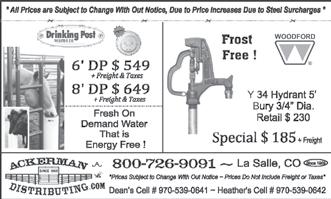

Hay Equipment
SWATHER FOR SALE: 2007 AGCO Challenger swather, model SP115B, CAT motor with 16’ hay head and 25’ draper head for small grain, used very little. Good condition. Call 308430-0346 11/9 NEW HOLLAND 499 12’ HYDROSWING MOWER CONDITIONER. Field ready, $3,800. Call 307-359-8668, Douglas, WY 10/19
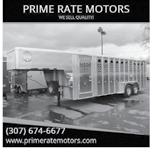


for Sale
1,230 ACRES OF PRIME AGRICULTURAL NON-IRRIGATED FARMLAND: Soils consist primarily of silt and sand loams. Located east of Hawk Springs, WY along the Wyoming/Nebraska state line. Professional care is dedicated to optimizing soil health. Divisible into smaller parcels to meet your investment needs. No improvements. $1,100,000. 3,316± DEEDED ACRES. Seller is considering offers on this ranch consisting of improved meadow grass and lush hard grasses. Run 250± cows through 12 pastures. Outstanding condition. Nice home plus excellent corrals and calving facilities. Natural tree-lined draws for livestock protection. Hawk Springs, WY. $4,700,000!! Pictures and video at www. buyaranch.com . Call Casey Essert, Land Broker, 307532-1750 TFN
NORTHEAST OREGON, THE DLX RANCH: Located near Baker City, OR the DLX is noted as one of the most productive and finest ranches around. It is well balanced and contains 17,000 deeded acres with 4,000 acres of irrigated meadows and cropland. Native and improved rangeland provides good spring and summer pasture. The ranch is well improved with nice homes, excellent livestock working facilities and is noted for its production and ease of operation and management. Abundant water and over 6 miles of the Powder River running through the ranch provide for not only production but unbelievable waterfowl and upland game bird habitat. The ranch also provides good populations of elk and mule deer. Situated in the heart of the Baker Valley, the ranch enjoys very scenic mountain views and is very private yet only a short drive to Baker City, OR. Currently operated as a commercial cow/ calf operation with a permitted feedlot. The ranch would also make an ideal yearling or combination operation. It is rare to find this quality of a ranch and particularly a property that is a going concern. This is a first-time offering and we look forward to hearing from you. $32,500,000. Livestock and rolling stock available by separate treaty. Please give us a call for further
rals,
and
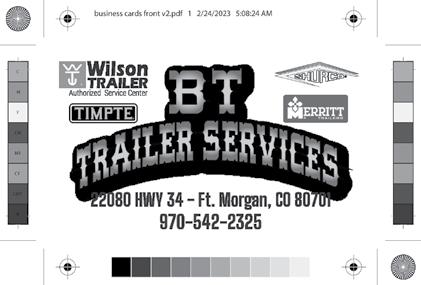
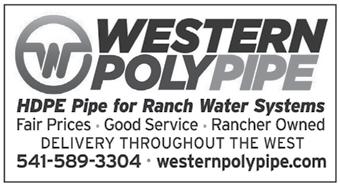

choice

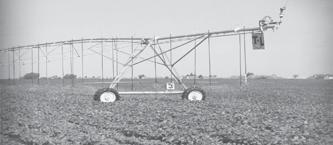
Killebrew Irrigation
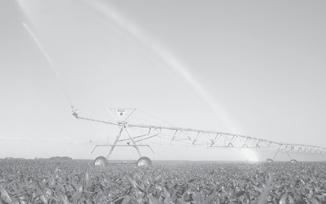
Reinke center
USED IRRIGATION PIVOTS FOR SALE, www.zimmag. com Irrigation systems are COMPLETE with custom sprinkler package, SORTED, BUNDLED and ready to ship. ● 2021 Zimmatic 8500 7 tower 1,297’ ● 2020 Zimmatic 8500 7 tower 1,297’ ● 2020 Zimmatic 8500 8 tower 1,296’ ● 2013 Zimmatic 9500P 7 tower 1,253’ with 2021 9500CC Custom GPS Corner 201’ + 88’ Overhang ● 2013 Valley 7000 7 tower 1,336’ ● 2014 Valley 8000 7 tower 1,216’ ● 2012 Zimmatic 9500P 9 tower 1,292’ ● 2020 Zimmatic 8500 3 tower 526’. Call 402-910-3236 10/26

Email your ad to denise@wylr.net
Wanted to Buy
BUYING 200-300 JACKRABBITS PER MONTH AT $10/ EACH: I pay shipping. E-mail ohminocat@gmail.com or call Dave at 406-529-1080 for further details 11/9
WE WILL PICK UP SCRAP IRON: On-site processing and removal. Receive $$$ top dollar $$$ for your junk!! Call for details: Pacific Steel and Recycling, 307-234-6006. Casper/ Central Wyoming 10/19
Partnership of Rangeland Trust celebrates anniversary
As farms and ranches across America are presented with an unprecedented series of challenges and opportunities, the Partnership of Rangeland Trust (PORT) – a nine-member alliance of land trusts in the West and Midwest with a focus to conserve working land – is celebrating 20 years of impact.
For the past two decades, agriculture has faced an increasingly uncertain future. Industrialization and urbanization have posed a threat to the nations’ vast and unique private farmlands, rangelands and grasslands.
Since 2004, PORT members, each with an affiliation to their state’s livestock trade association, have banded together to help keep working lands in working hands.
Collectively, PORT member organizations have helped more than 2,000 families voluntarily conserve more than three million acres of vibrant working lands across 12 states.
This regional alliance originally included six land trusts in 2004, including the California Rangeland Trust, Colorado Cattlemen’s Agricultural Land Trust, Wyoming Stock Growers Land Trust, Montana Land Reliance, Kansas Livestock Association, Ranchland Trust – now called the Ranchland Trust of Kansas – and the Oregon Rangeland Trust – now expanded to the Northwest Rangeland Trust, serving Oregon, Washington and Idaho.
Subsequent additions have included the Nebraska Land Trust, South Dakota Agricultural Land Trust and Texas Agricultural Land Trust, which also serves Oklahoma.
The alliance’s mission is to advocate for the conservation of working lands and Western heritage for the benefit and well-being of future generations.
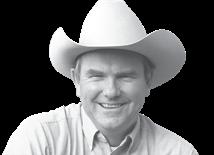
IT'S THE PITTS
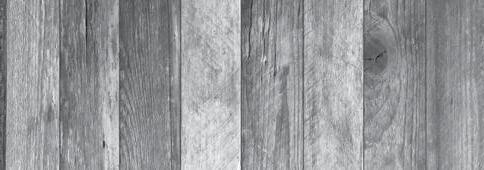
by Lee Pitts
Natural Gas
Our heater in the house is on the fritz, so I checked with a heating and air conditioning firm we’ve done business with in the past and was informed I could get a new heater for – are you ready for this? – only $5,000!
“Does this include a lifetime supply of gas or something?” I asked the salesman.
So, I started on my quest to find an alternate heating solution.
The first option was to go without a heater and freeze to death, or we could buy more blankets and fire-
University of Wyoming (UW) research regarding the impact of trout introductions in the high-elevation lakes of Wyoming’s Wind River Range is continuing with the support of the National Science Foundation (NSF).
Amy Krist, an associate professor in UW’s Department of Zoology and Physiology, recently received a $307,731 NSF grant for a three-year project to examine how evolutionary change of zooplankton driven by trout introductions affects ecosystem function of lakes.
Previous UW research found the introduction of fish in the lakes of the Wind Rivers starting in the early 1900s has driven a decrease in the size of zooplankton, the small aquatic organisms on which trout feed.
UW researchers also have found the fish themselves have adapted to their
wood. Then I was struck by a fantastic idea. What could we use for fuel that we have plenty of and would be free? Cow chips, of course. We could burn them in our fireplace for free like the pioneers did.
My wife likes saving money as much as I do, and I’d almost convinced her about the cow chip idea until I told her, because of my tender health, she’d have to be the one to collect the chips.
In my neck of the woods, we only have to deal with nearly freezing
environment by growing higher numbers of gill rakers, which are bony or cartilage structures in the gullets of fish which act as sieves to retain zooplankton and nourish the trout.
Krist’s new project aims to dive into the evolutionary changes in zooplankton in more depth and detail.
“Although some of the ecological consequences of introducing trout into alpine lakes are diverse and well studied, we have much to learn about the ecological consequences of trout-driven evolutionary change,” Krist says. “A deeper understanding can help us determine the potential for further ecological changes.”
The lakes of the Wind Rivers historically didn’t contain fish, but trout stocking, which began in the early 1900s, has created an environment in which hundreds of
weather for about one week of the year.
Having written this, I’m thinking the folks in North Dakota, Maine and Montana are probably saying, “What a wimp Pittsy is!”
And I suppose I am.
What can I say, I’m a fifth generation Californian who has lived on – or near – the coast my entire life, where our weather is almost idyllic. All we have to put up with is fog and earthquakes.
We don’t need – or have – air conditioning and hardly ever use the heater, except at night when it might get all the way down to 45 degrees inside of our comfy home.
So, one can see why spending $5,000 for something we’ll rarely use seems like an unnecessary allocation of our resources.
We were almost ready to pull the trigger on the
those lakes now have strong fish populations – some carried on by natural reproduction for decades.
This environment has provided a laboratory for researchers to study the ecosystem changes in the oncefishless alpine lakes, to which anglers today make long hikes to pursue cutthroat trout and relatively rare golden trout.
Krist intends to contrast the effects of zooplankton from lakes where they are adapted to trout to zooplankton from fishless lakes, where they are not adapted, to understand the effects of each type of zooplankton on lake productivity.
Krist will also analyze zooplankton and algae in UW core facilities for carbon, nitrogen, phosphorous and other biologically essential elements.
These experiments and
heater when I remembered something I’d read about years ago.
As I explained to my wife, “I don’t remember in what country it was, but the people’s houses were two stories, with the bottom story being reserved for cows. Yes, cows. By cutting a few holes in the floor, the heat the cows produced naturally drifted upwards and this is how they heated their houses.”
“Well that gives new meaning to the words ‘natural gas,’ doesn’t it?” asked my wife.
“It’s the perfect solution for us. We have all of that open space underneath our house, and we could kill two birds with one stone,” I said. “A few cows could get out of the weather, and they’d heat our house for free.”
“In order to make room for the cows, what are you
going to do with all of the worthless junk you’ve stored under the house?” my wife asked.
“We’ll sell all of my valuable junk, but because of my tender health, you’ll have to remove it to make room for the cows, which will produce the cow chips you’ll have to muck out in the spring,” I explained. “Just think, it’s an ingenious enclosed system I’m sure any greenie would love. If we want to turn down the thermostat in the middle of the night, all you have to do is go kick a couple cows out from under our house.”
“Would we have to get a permit from the county?” asked my wife.
“Of course we would. After all, this is California, where you have to get a permit to flush the toilet,” I replied.
“But wouldn’t it smell something awful?” asked
my wife.
“Not any worse than the natural gas coming out of a pipe that they make smell like rotten eggs so we can smell a gas leak,” I said. “Only instead of coming out of the orifice of a pipe, our natural gas will come out of the orifice of a cow.”
“But when company comes to stay, won’t we be embarrassed about heating with cows?” my wife asked.
“That’s the beautiful part about it,” I said. “You know how we hate having company, right? If we install our cow heater, I guarantee it will cut down on the number of house guests we have in the future. And even if relatives do come and try to use our home as a hotel where we cook and clean for them, I guarantee they’ll be getting an early checkout after only one night.”
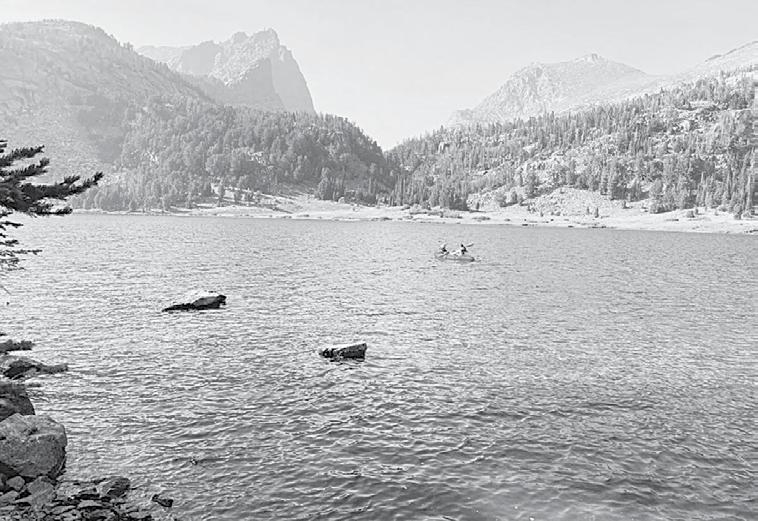
analyses are expected to provide insights into the differences in evolutionary dynamics of zooplankton in the two types of lakes.
“These results should demonstrate how trout introduction alters natural selection of other organisms, which can drive additional
environmental change in the ecosystem,” Krist says.
This story was originally published by UW News on Oct. 1.


Dairy industry requests monthly reporting from USDA to assess trends
The U.S. dairy industry has long relied on monthly milk production data from the U.S. Department of Agriculture (USDA) to track the trajectory of milk supplies available for processing and to project potential dairy product output. Historically, falling milk production from dairy farms would signal a decline in supplies of both fluid milk
and the key solid milk components used to produce cheese, butter and other dairy foods. Production volumes of farmgate milk and the components in the milk trended closely together for decades.
As a market indicator, tightening milk supplies could potentially curtail dairy processors’ growth or expansion plans.
This dynamic has changed, however, as the composition of milk produced in the U.S. has evolved to steadily include more butterfat and protein content.
While U.S. milk production has slowed in recent years, key milk components used to make many of the most popular solid dairy products have climbed.
13 Heifer, 864# $224.50 5 Heifer, 979# $210.50 COWS BOULDER 1 Cow, 1015# $167.50 1 Cow, 1085# $160.00 RIVERTON 2 Cow, 1182# $150.00 CROWHEART 1 Cow, 1640# $137.50
SHOSHONI 1 Cow, 1565# $133.00 RIVERTON 2 Cow, 1550# $130.00 DANIEL 1 Cow, 1225# $130.00 SHOSHONI 2 Cow, 1362# $129.00
RIVERTON 2 Cow, 1692# $128.50 GREEN RIVER 1 Cow, 1595# $127.00 BAGGS 5 Cow, 1658# $125.50
RIVERTON 4 Cow, 1265# $125.00 11 Cow, 1123# $124.00 4 Cow, 1255# $122.00
CROWHEART 2 Cow, 1425# $118.00
RIVERTON 2 Cow, 1422# $117.00
WOODRUFF, UT 3 Cow, 1223# $116.50
BOULDER 3 Cow, 1191# $116.50
GREEN RIVER 1 Cow, 1345# $115.00
DANIEL 5 Cow, 1288# $113.50
BOULDER 4 Cow, 1407# $113.00
DANIEL 6 Cow, 1185# $110.00
CROWHEART 3 Cow, 1233# $110.00
DANIEL 7 Cow, 1091# $109.50 BULLS
CROWHEART 1 Bull, 1625# $148.00
BAGGS 1 Bull, 1690# $145.50 1 Bull, 1890# $141.00 BIG PINEY
Bull, 1605# $141.00
1 Bull, 1960# $140.00 KEMMERER 1 Bull, 1925# $139.50 RIVERTON 2 Bull, 1732# $139.00 RAWLINS 1 Bull, 1575# $139.00
BOULDER 1 Bull, 1630# $137.50 ST STEPHENS 1 Bull, 2060# $136.00
RIVERTON 2 Bull, 1825# $135.50 HEIFERETTES DANIEL 24 Heiferette, 884# $198.00 4 Heiferette, 905# $177.50 BOULDER 4 Heiferette, 952# $190.00 4 Heiferette, 1010# $152.50 BREDS GREEN RIVER 8 Bred Cow, 1161# $2,300.00 5 Bred Cow, 1002#
5 Pair, 1975# $3,800.00
TUESDAY, OCTOBER 22
Recent dairy production data accentuates the trend. Through September 2024, U.S. milk production on a milk volume basis has declined for 14 consecutive months. Meanwhile, butterfat and protein production has grown in 12 of those same months.
According to a new report from CoBank’s Knowledge Exchange, the
decoupling of fluid milk production and milk component production represents an important paradigm shift for the industry given growing consumer demand for manufactured dairy products.
More than 80 percent of U.S. milk production goes into dairy food products which rely on milk components while less than 20 per-
400-500#. Light, green high desert calves! Fancy!
Murray Ranches- 300 Blk Ang & AngX Strs & Hfrs 450-550#. Comp vacc @ Branding. Sired by Popo Agie Blk Ang bulls. All natural. High desert & green!
Downs Ranch- 225 Mostly Blk Strs & Hfrs 450-550#. Rec Inforce 3, Bovishield Gold Pro & 8 way w/Somnus. Complete mineral program. High elevation. Knife cut. Reputation, one brand calves!
Shane & Chris Eberline- 200 Blk Ang & AngX Strs & Hfrs 450-550#. Rec C & D @ Birth; Vista Once SQ & 7-way @ Branding. Sired by Hancock Blk Ang bulls. Reputation, high elevation! Green! Hellyer Ranch- 200 Blk Ang Strs & Hfrs 450-525#. Rec Vision 7 w/Spur, Stimulator 5, & ProBac4 @ branding. Steers are EID tagged S&A Sampson. Sired by Popo Agie Blk Ang bulls. Reputation calves!!
Darwin Griebel- 150 Blk Ang Strs & Hfrs 500-600#. Rec Vista Once SQ & Vision 7 w/Somnus @ branding. Knife cut. Sired by 100% Blk Angus bulls. Powerful set of One Iron calves!!
Sarah Faith Ranch- 150 Blk Ang Strs & Hfrs 400#. Rec Enforce 3, Vision 7 & Bovishield Gold 5 in the spring & fall. All Natural. No Hormones. Raised @ high elevation. Sired by Powerful Blk Ang Bulls. Steve & Trudy Slagowski- 125 Blk, BWF, Small % RWF Strs 475-525#. Rec Vista Once SQ & Vision8 @ branding. Knife cut. Sired by Yardley, Durbin Creek & Diamond Peak Bulls. High elevation, Green & Stout!
Dwayne Aragon- 120 Blk Ang & AngX Strs & Hfrs 450-525#. Comp vacc @ branding. 100% Blk Ang sired. Choice, High Desert calves!
Eli & Ashlynn Eastman- 100 Blk Ang Strs & Hfrs 550-600#. Rec Pyramid 5 + Presponse SQ & Bar-Vac 7 w/Somnus @ branding & 6-5-24. Sired by Kal Herring Blk Ang bulls. Summer @ 8000-9000 ft! Super set of calves!
Ron & Becki Weber- 100 Herford & small % HerefordX (BWF) Strs & Hfrs 500-650#. Rec One Shot Ultra 7 @ branding, Bovishield Gold One Shot @ turnout, Bovishield Gold One shot @ Precon. Sired by Van Newkirk, Churchill & Largent bulls. High elevation & Reputation feeding cattle. Heifers will be replacement quality!
Jesse & Loretta Hankins- 100 Blk Ang & AngX Strs & Hfrs 450-550#. Comp vacc @ branding. High elevation. Reputation, one iron, nice set of calves!!
Bob Lucas- 90 Blk Ang Strs 525-600#. Rec Enforce 3 & Vision 7 w/Somnus @ branding. Sired by Lucky 7 Blk Ang Bulls. Multiple generations of Low PAP, feed efficient genetics! Year around high elevation! Fancy!!
Kieth Martin- 85 Blk Ang Strs & Hfrs 450-500#. Rec 8 way & Vista Once SQ @ branding & Precon. Sired by Powerful Blk Ang bulls. Run at elevation on the mountain. Tim & Anna Rodewald- 83 Blk Ang & AngX Strs 500-550#. Rec Endovac ImmunePlus @birth. Rec 2 rounds of Pyramid 5 w/Presponse, 7-way w/Somnus, Safe-Guard Dewormer & Cylence Pour-On @ branding and Precon(10-5). Knife cut. Hot wire & bunk broke. Sired by Hague Blk Angus bulls. One brand, Fancy!
Gary & Bonnie Hall- 80 Red Ang & Red Ang X Strs & Hfrs
400-500#. Rec Vista Once & Vision 7 @ branding. Fancy, green, high desert calves!
Leach & McKee- 75 Blk AngX Strs & Hfrs 575-625#. Rec Vista Once SQ, 8-way w/ Spur & poured w/ Ivomec @ branding. Sired by Hering & Abernathy Ranch Blk Ang Bulls. Powerful! High elevation!
Tony Roman- 70 Blk/Blk WF Strs & Hfrs 500-600#. Rec Vision 8 w/ Spur @ branding. Powerful, High Desert Calves!
Bob & Dar Vogel- 60 Blk AngX Strs & Hfrs 475-525#. Rec Vista Once SQ & Vision 7 @ branding. Choice Calves!
Dakota Arno & Andrea James- 50 Blk & Red Ang Strs & Hfrs 400-450#. Rec Virashield 6 & 8 way w/Somnus @ branding & Precon & CattleActiv & MultiMin. Year-around Mineral Program. Fancy, high desert calves!
Neal & Becky Anderson- 54 Blk Ang/Ang X Strs & Hfrs 550650#. Rec Vista Once SQ & 7 way @ branding. Choice Calves!
John & Sharon Bringolf- 35 Blk & BWF Strs 20 Blk & BWF Hfrs 500-550#. Rec 7 way w/Somnus @ branding. Knife cut. Sired by Angel Blk Angus bulls. Nice set of high desert calves, coming off extremely dry conditions, ready to perform!
Chris & Jerome Young- 45 Blk Ang/SimX Strs & Hfrs 500#. Rec 7 way @ branding. Out of Angus/SimX cows, calved in April. High elevation & Great set of powerful calves!! Hamel Ranch- 40 Blk Ang & AngX Strs & Hfrs 500-600#. Rec Vista Once & 7 way @ branding. Sired by powerful Blk Ang bulls. One brand set of high elevation calves!
Sierra Tidzump- 35 Blk & Red AngX Strs & Hfrs 450-500#. Rec Vision 8 @ branding. Sired by powerful Registered Pingetzer Red Angus Bulls. Fancy High Desert calves. Green!
Carl Calvert- 35 Blk Ang & AngX Strs & Hfrs 500-600#. Comp
vacc @ branding. Blk Ang sired. High elevation.
Jennifer McIntosh- 30 Blk Ang & AngX Strs & Hfrs 375-400#. Rec Ultrabac 7 + Somubac & Virashield 6 @ branding, Ultrabac 7 w/Somnus, Virashield 6 & Endovac-Beef w/ ImmunePlus @ precon. Nice set of High desert calves!
Amy Cross- 28 Blk & BWF Strs & Hfrs 400-550#. Comp vacc @ branding. Sired by Registered Blk Ang bulls. High elevation calves!
Dion & Laura Tidzump- 25 Blk & Red AngX Strs & Hfrs 450500#. Rec Vision 8 @ branding. Sired by powerful Registered Pingetzer Red Angus Bulls. Fancy High Desert calves. Green!
Clay Cope- 25 Blk Ang/Ang X Strs & Hfrs 450-550#. Rec Virashield & Vision 7 w/Somnus & Spur. Bunk Broke! Nice Calves!
cent goes into the fluid beverage category. Considering the significance of these changes in U.S. milk composition and consumer demand, the report suggests the dairy industry would benefit from a more comprehensive monthly report from USDA which includes milk, protein and butterfat production levels.
TUESDAY, OCTOBER 29
